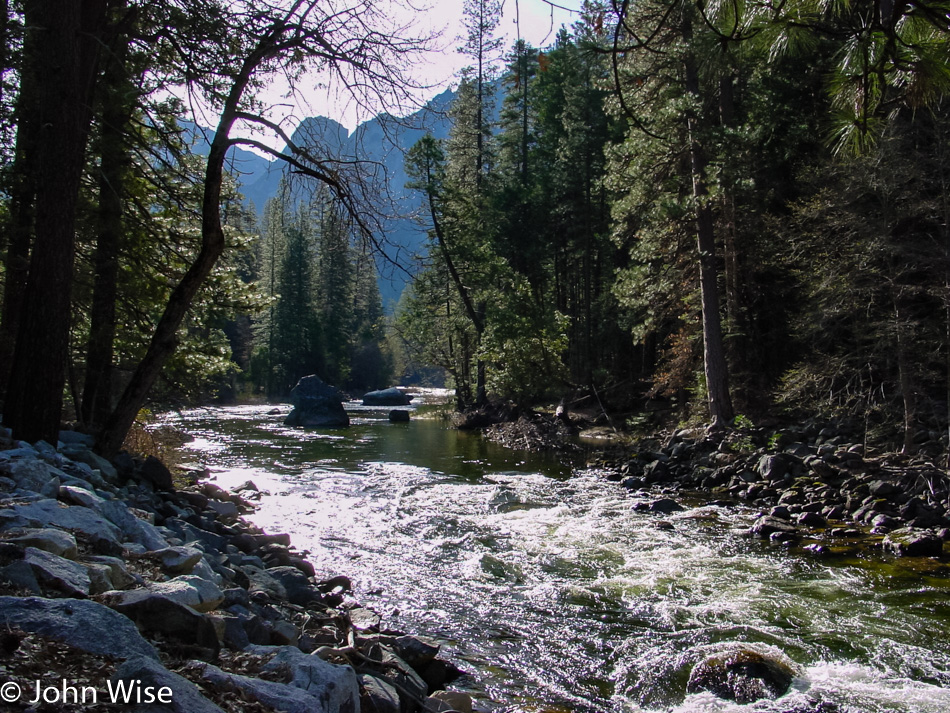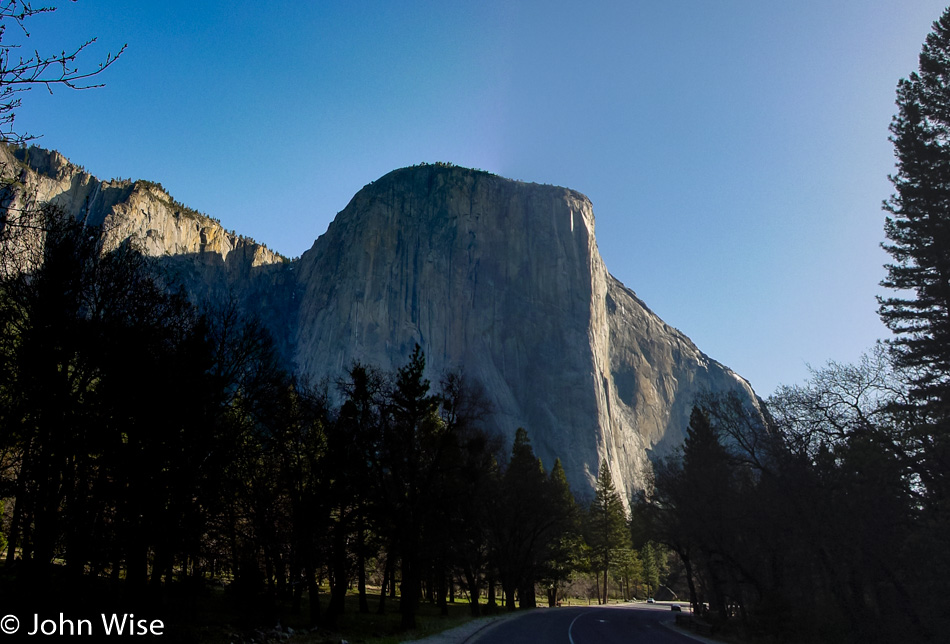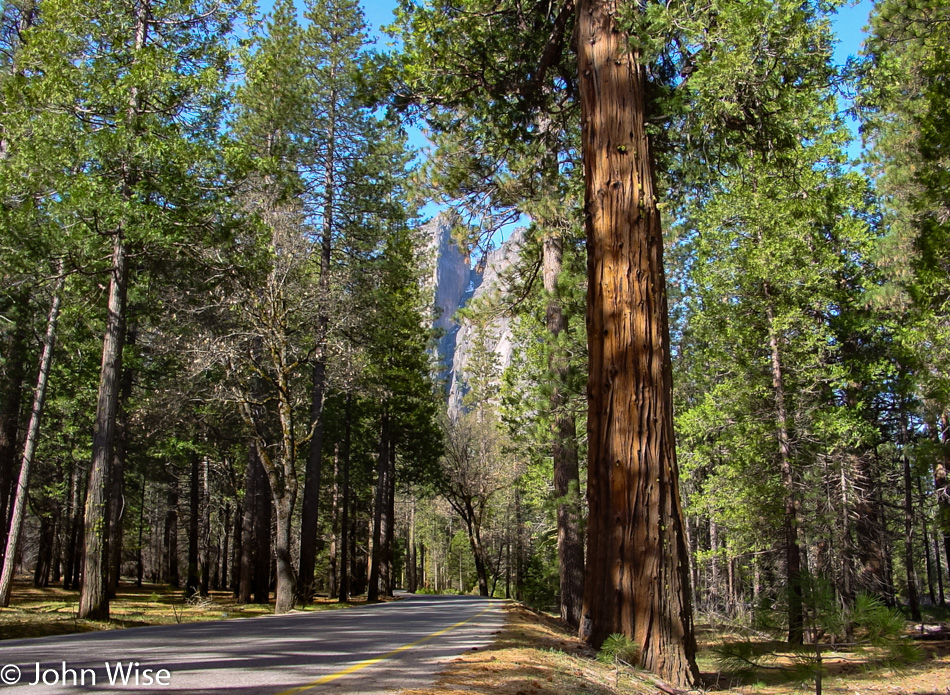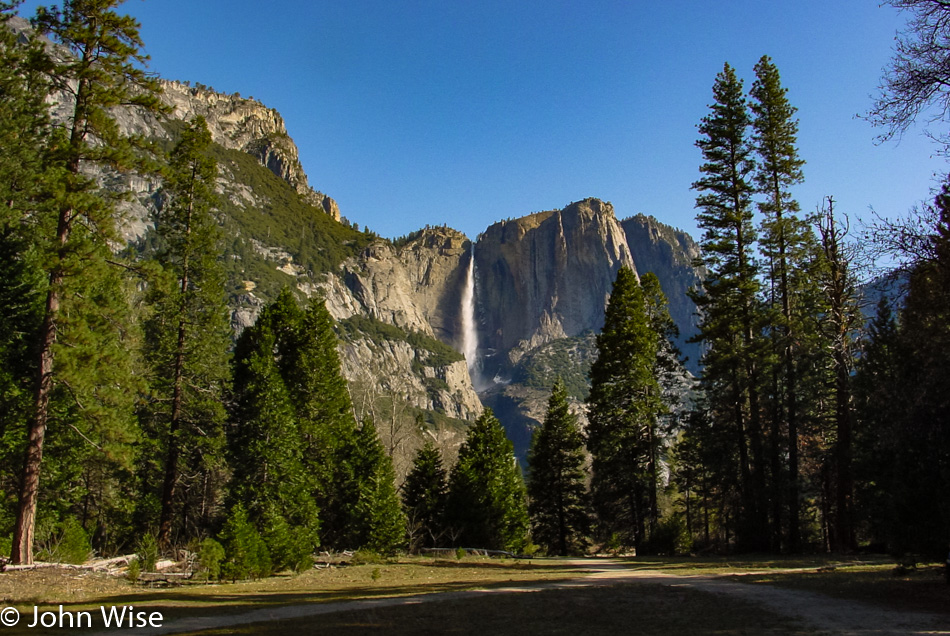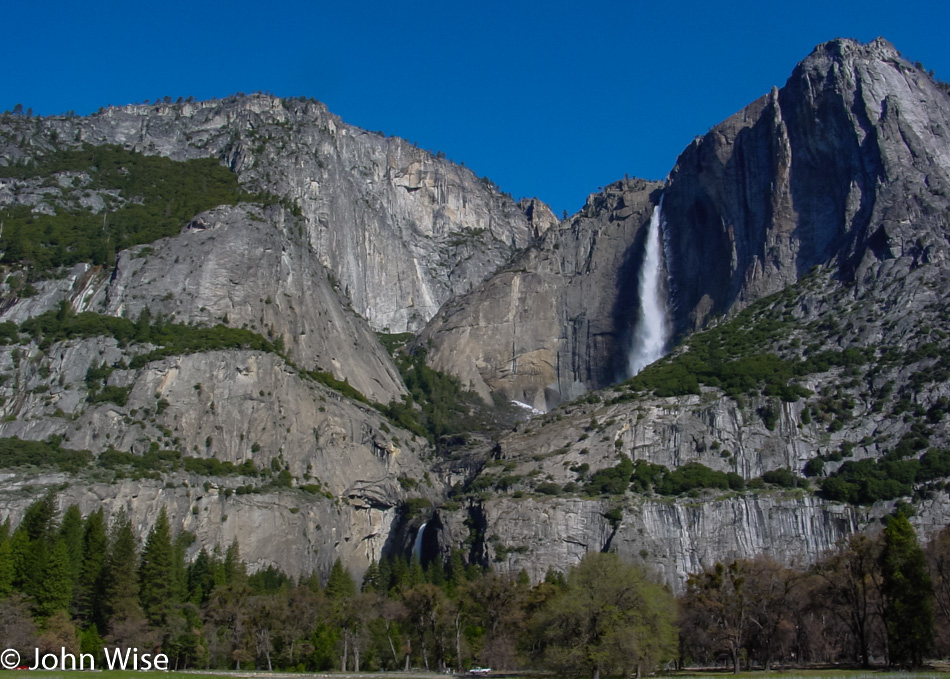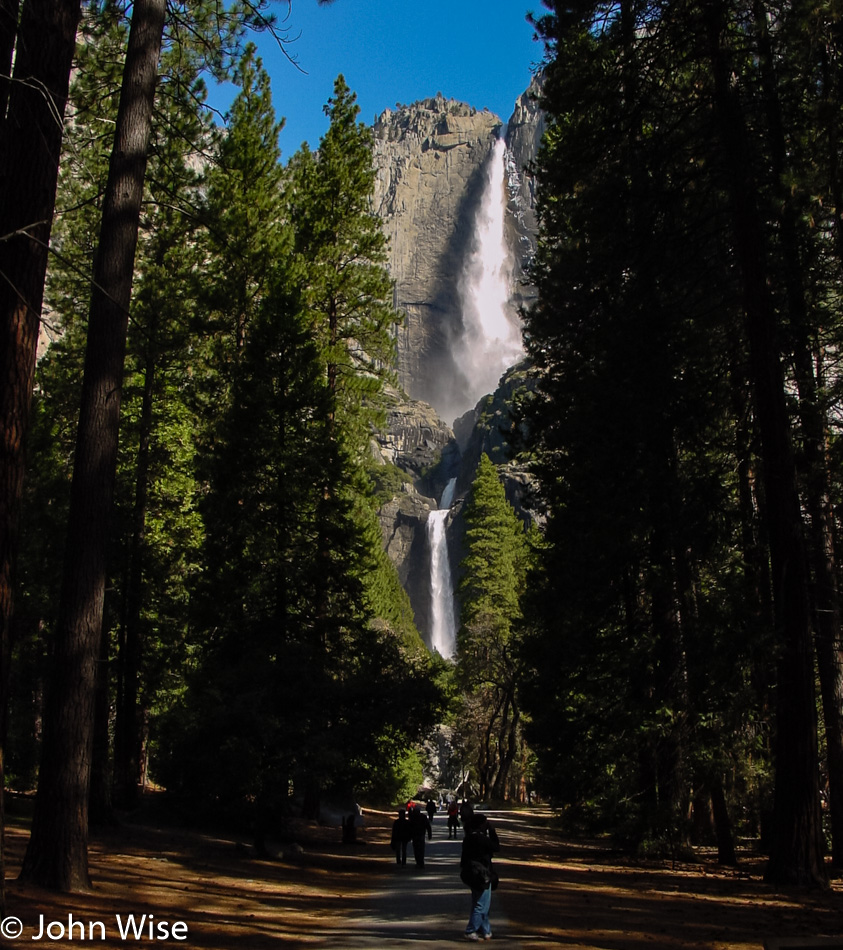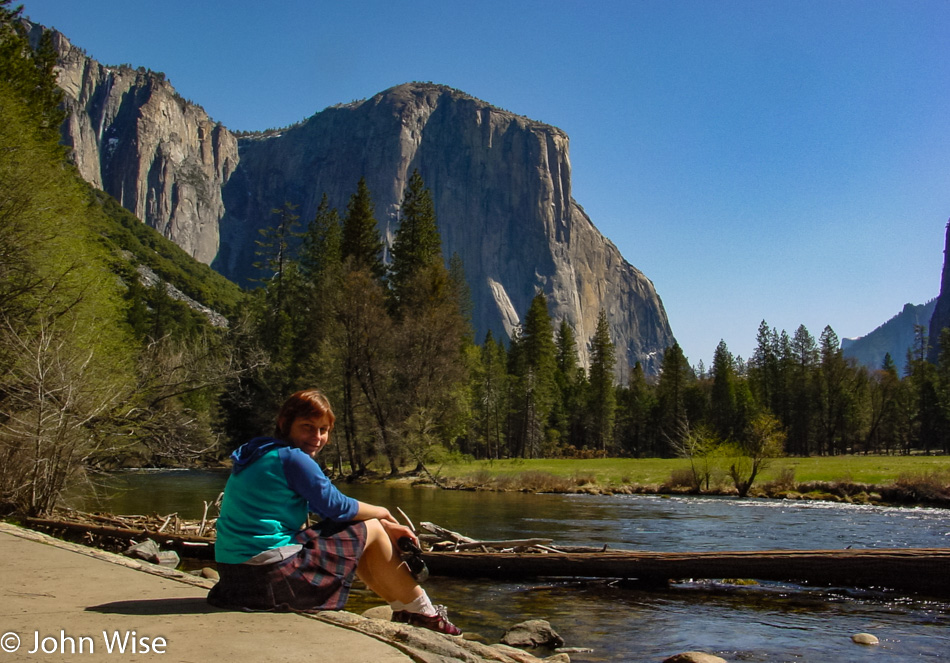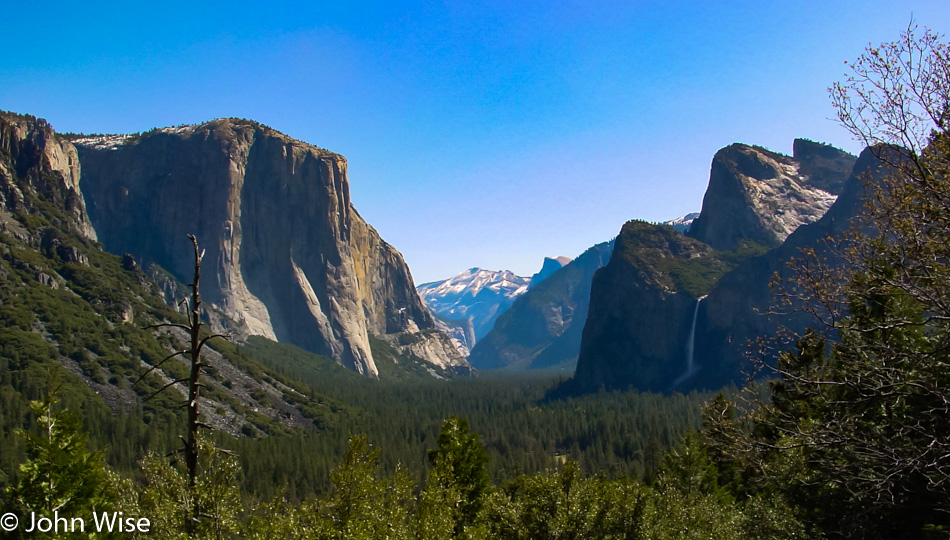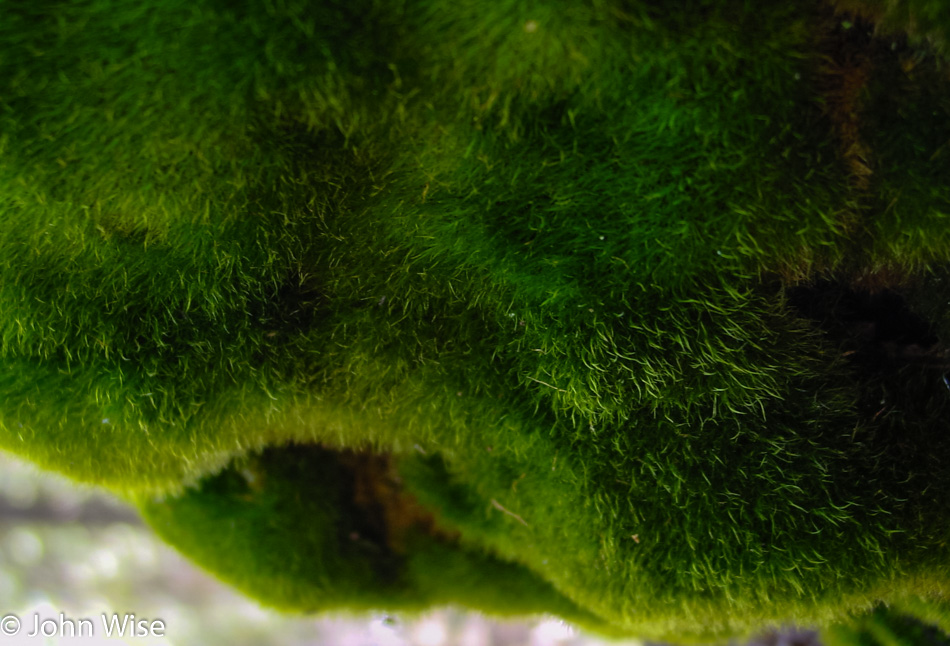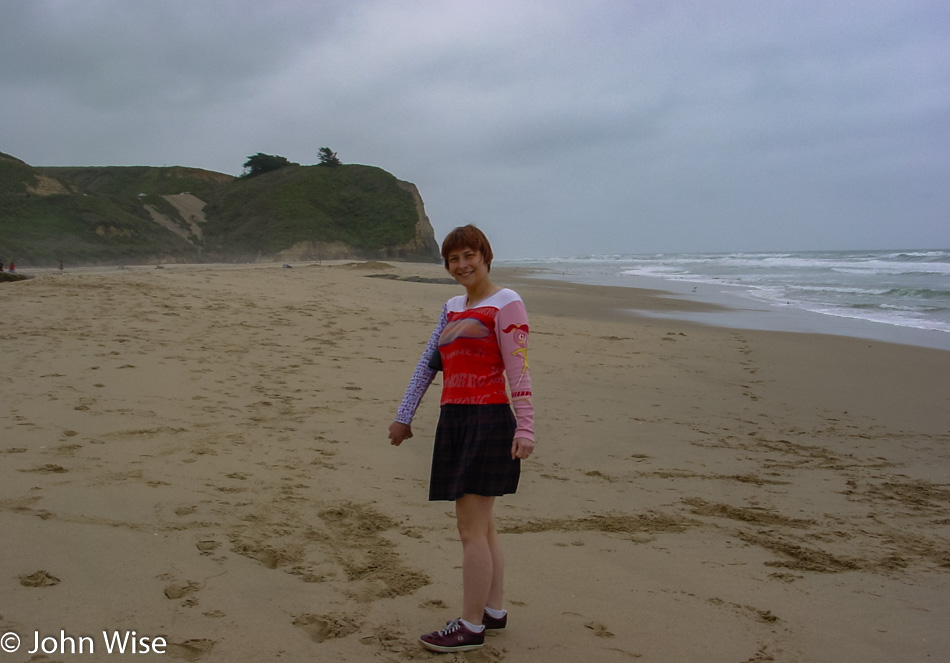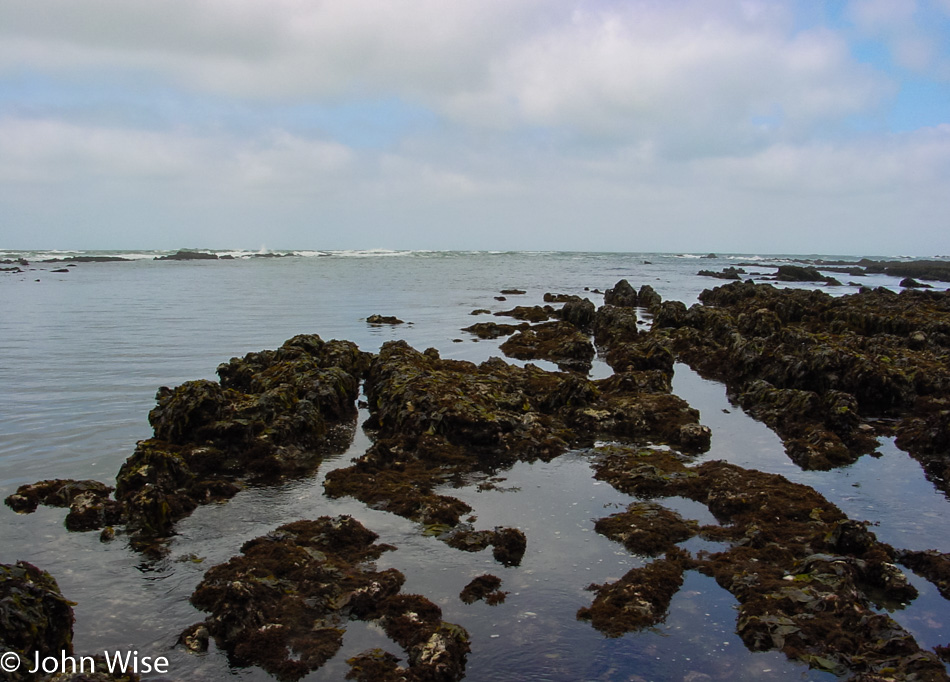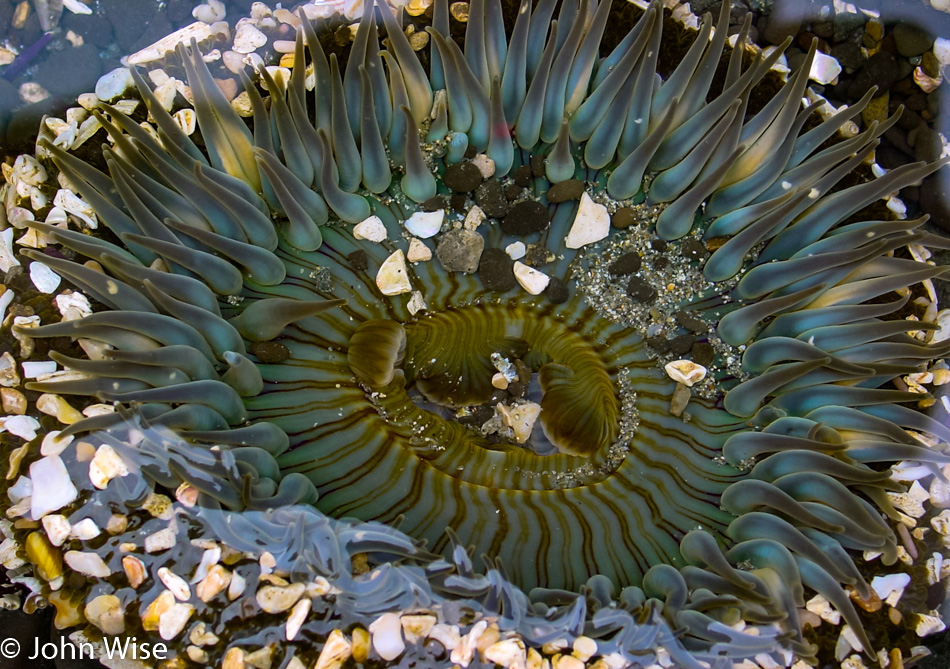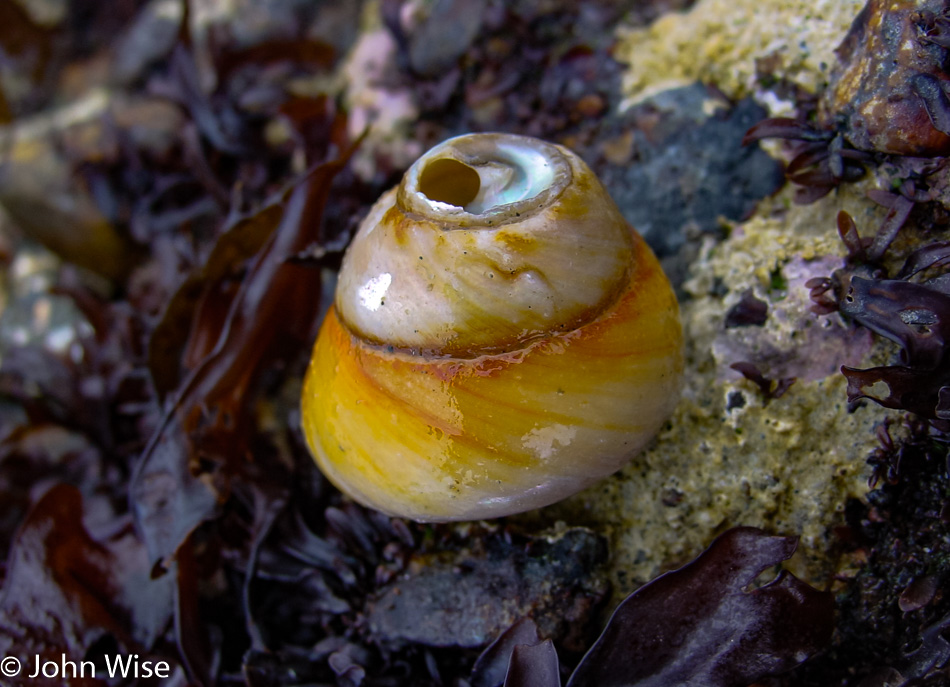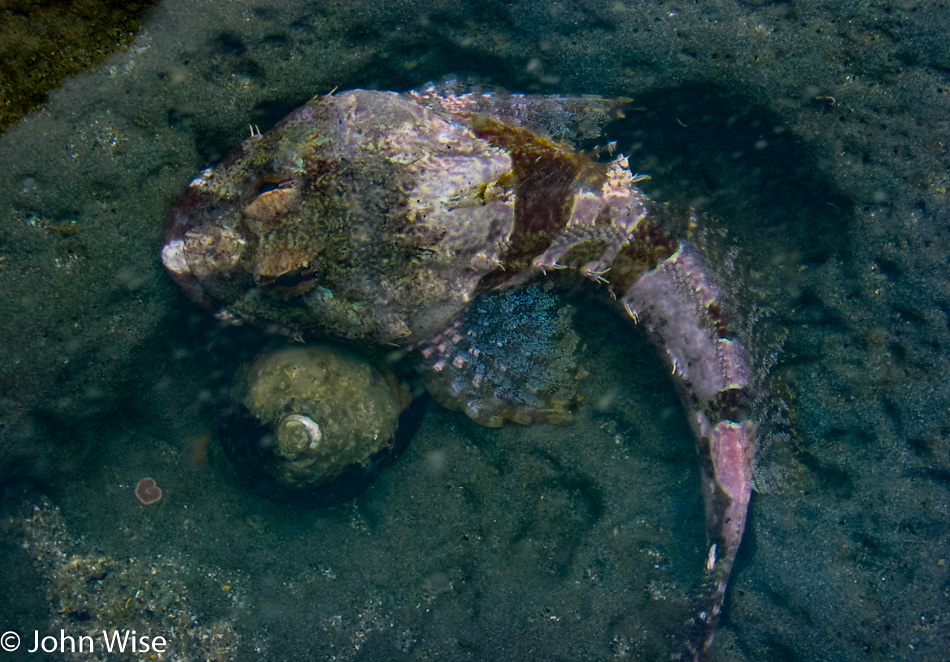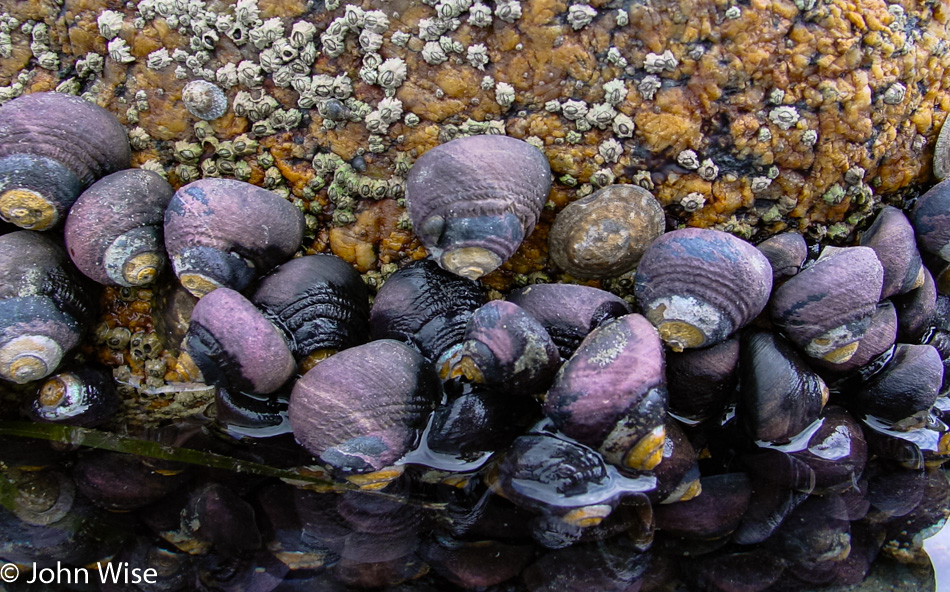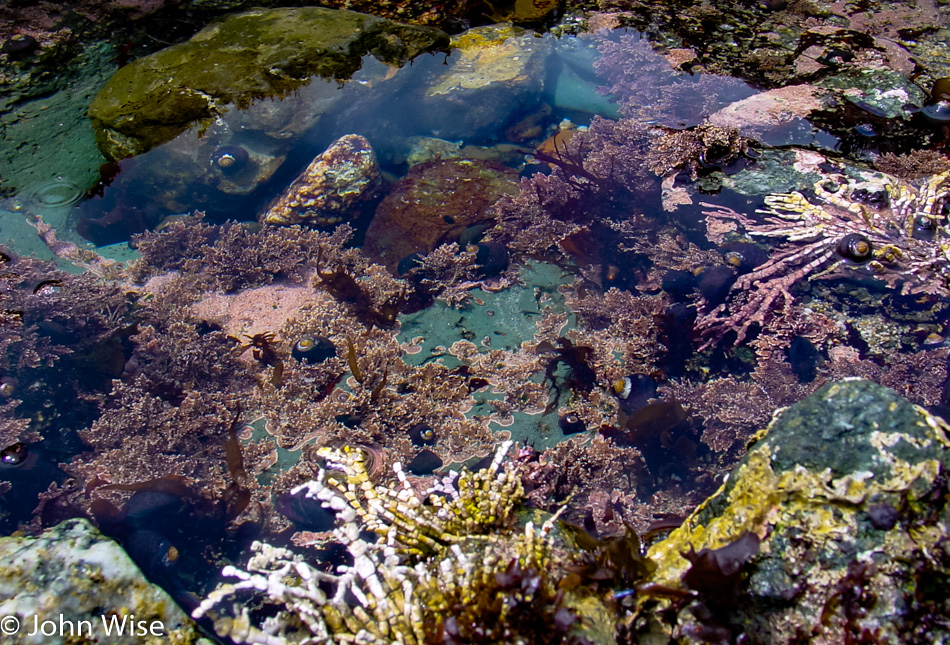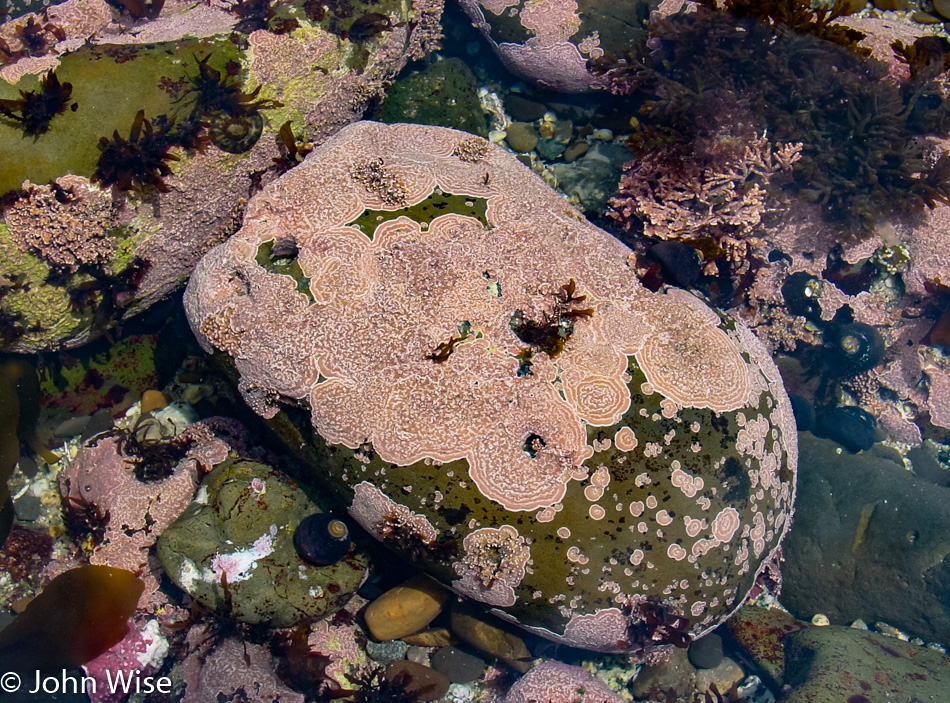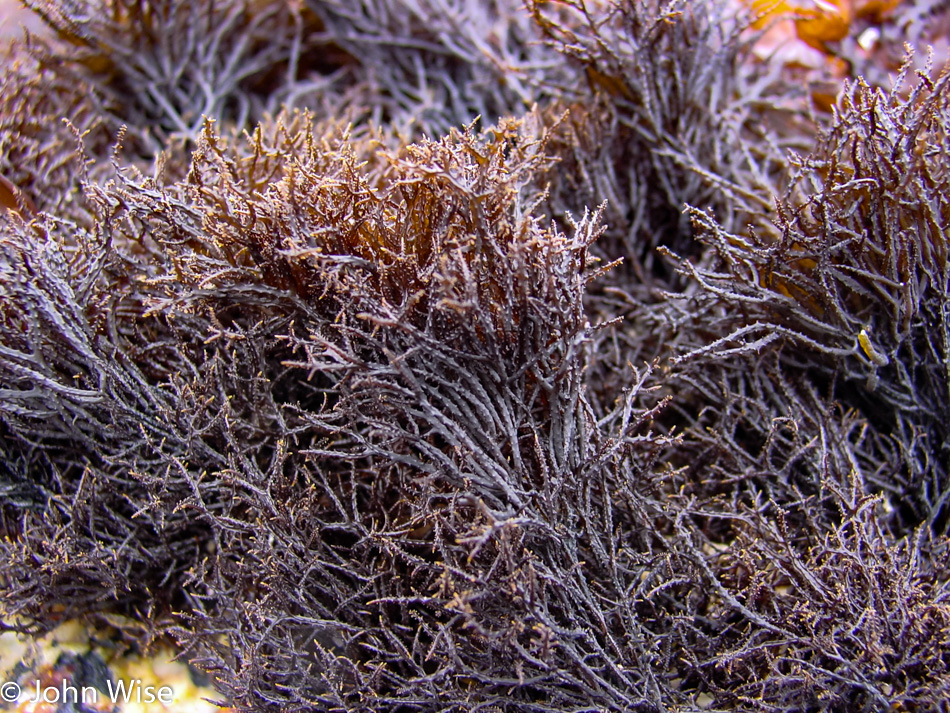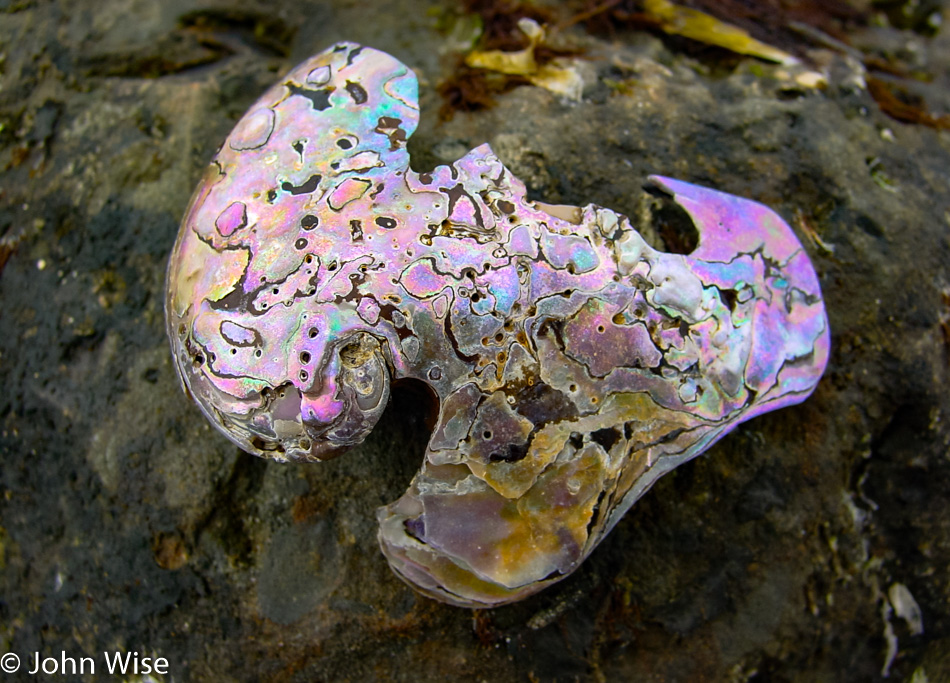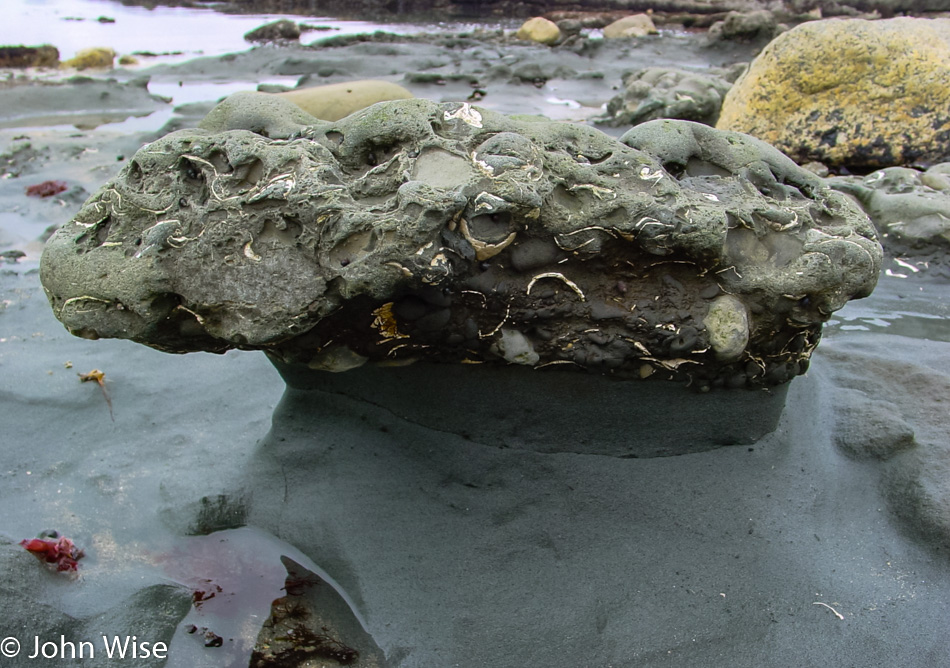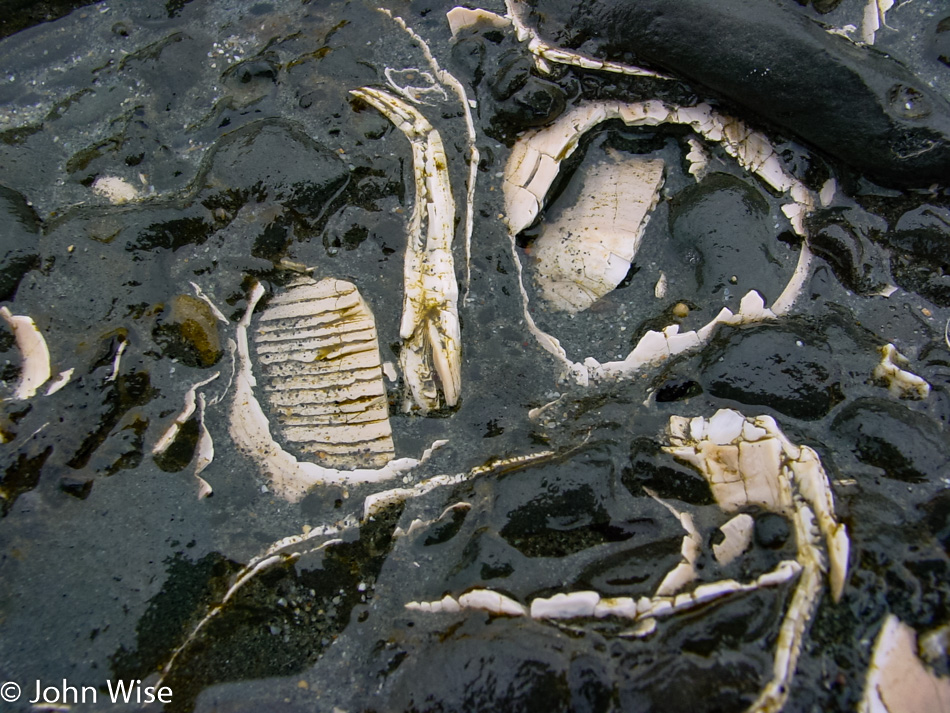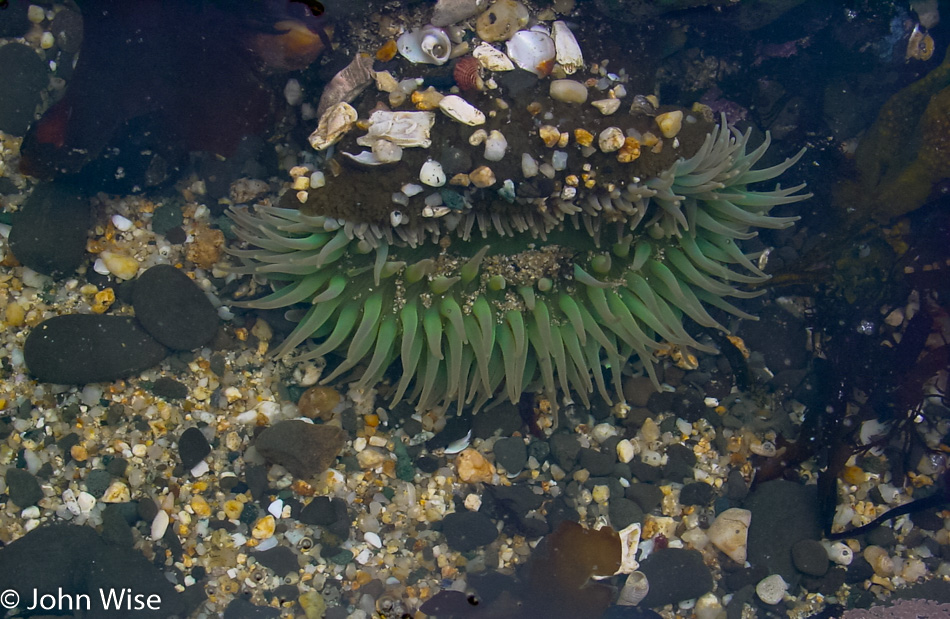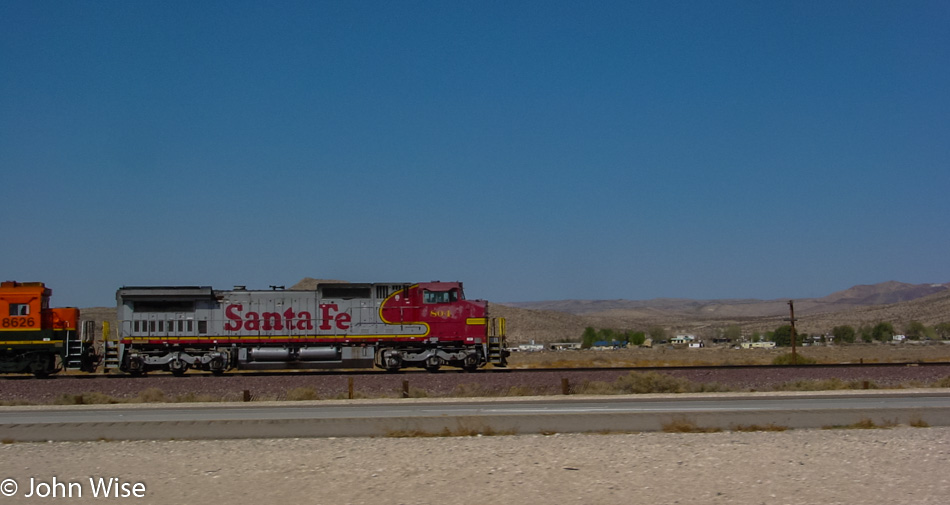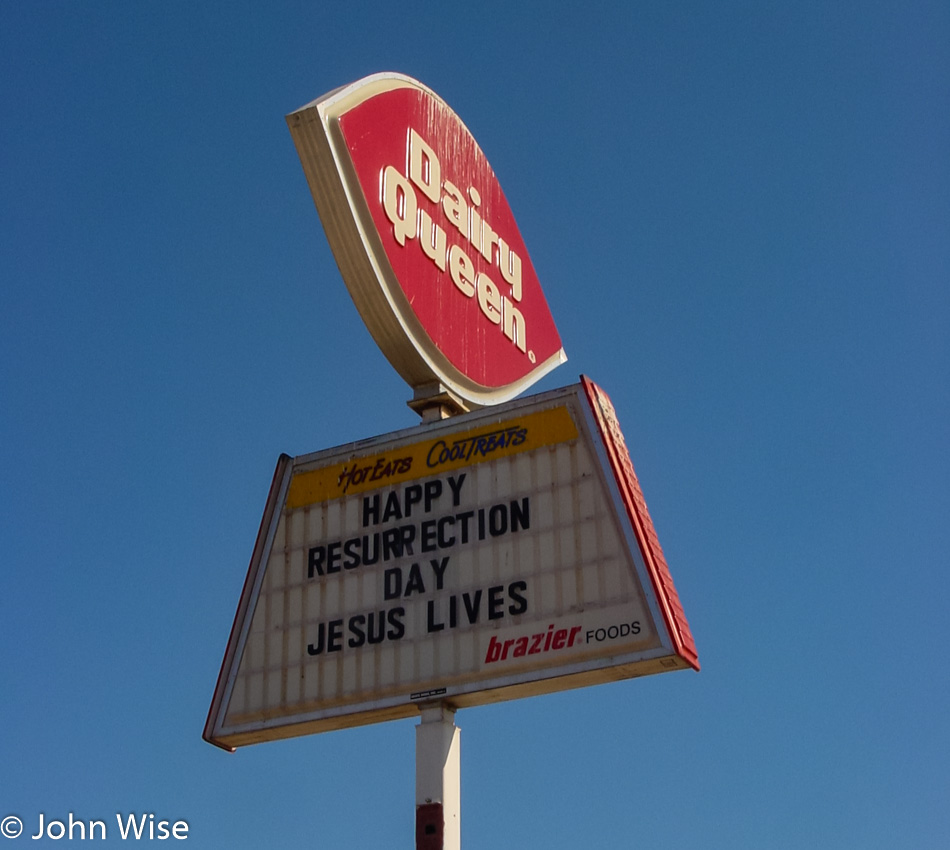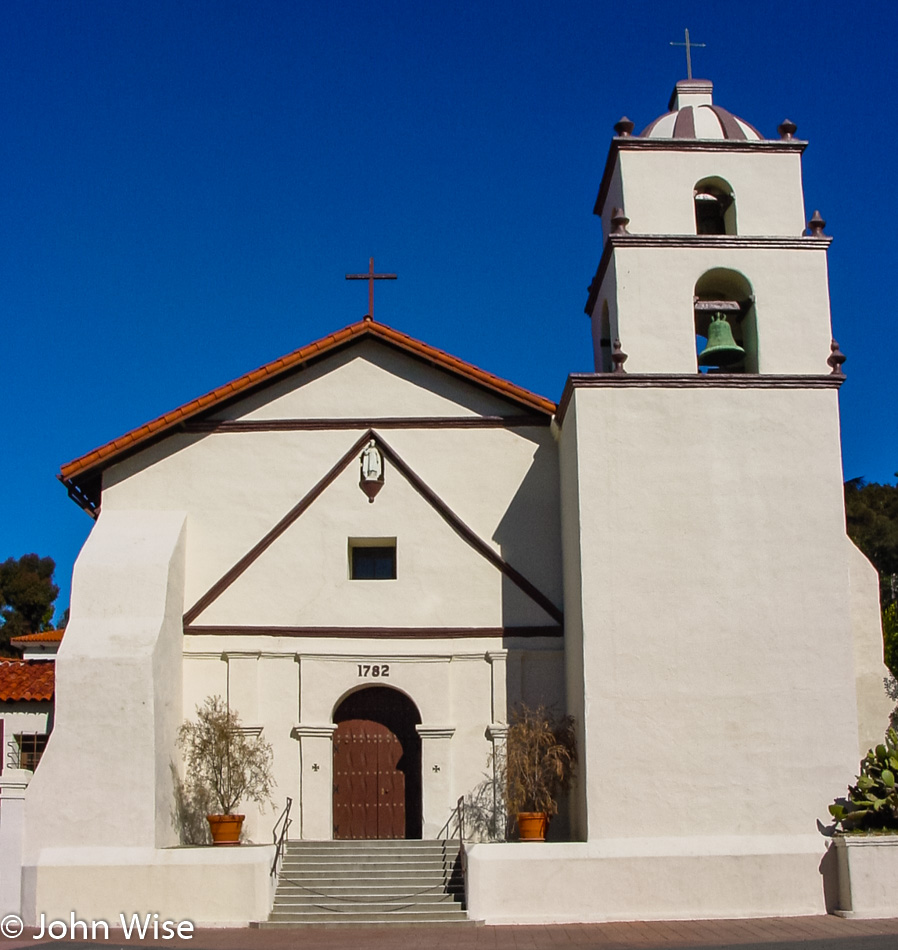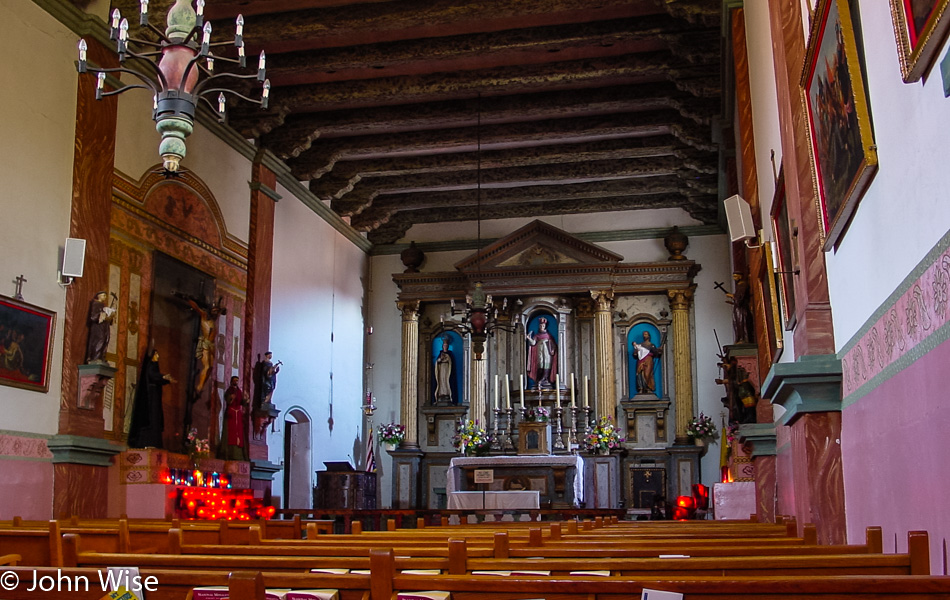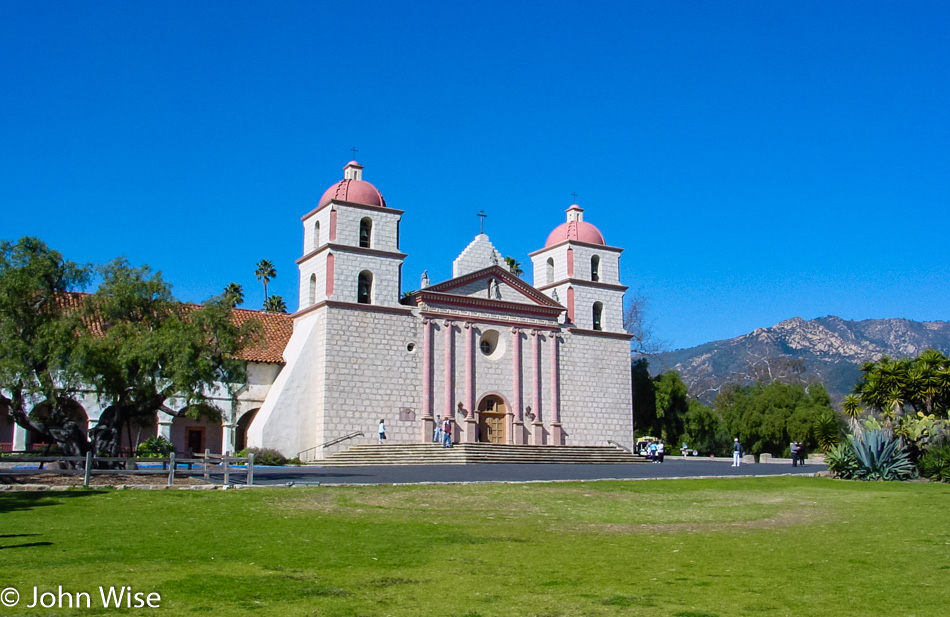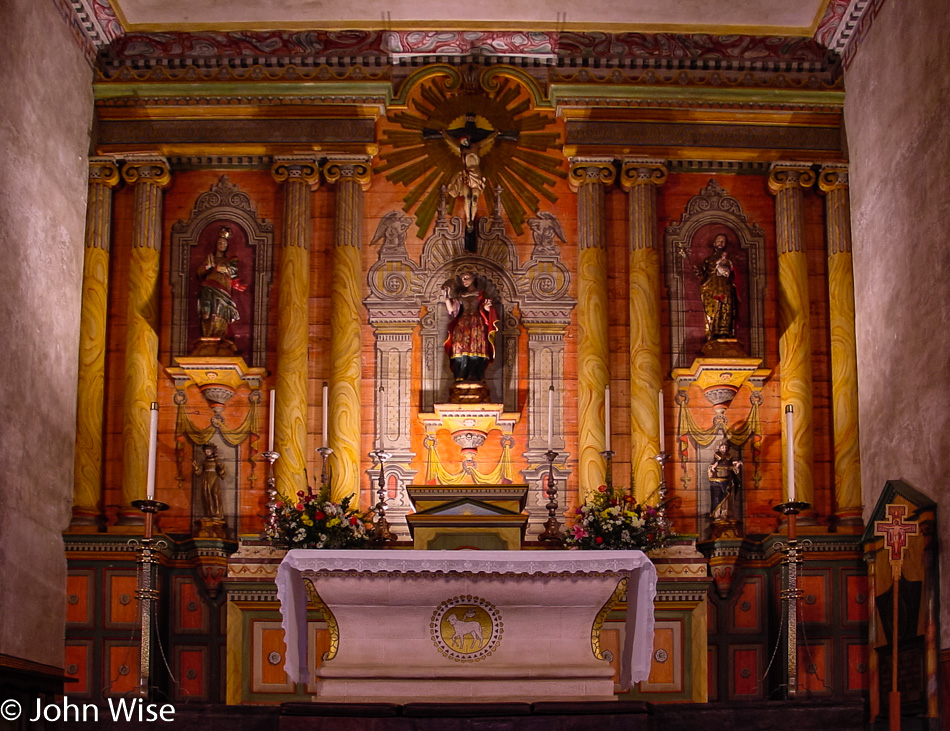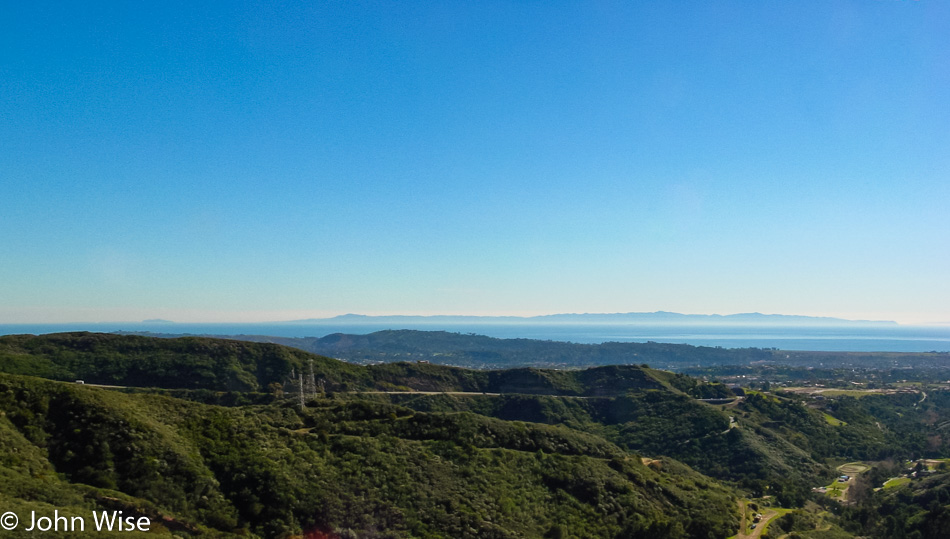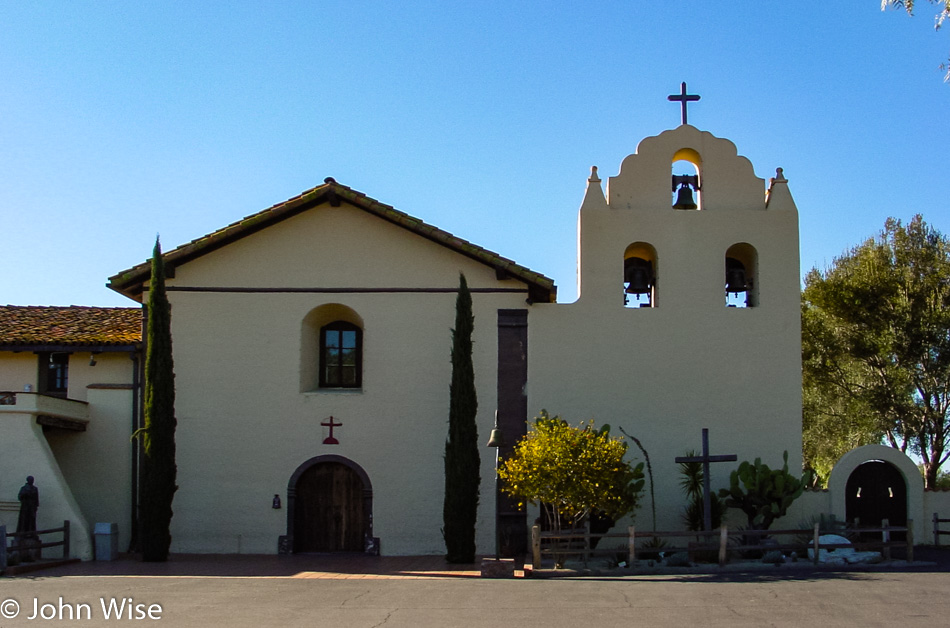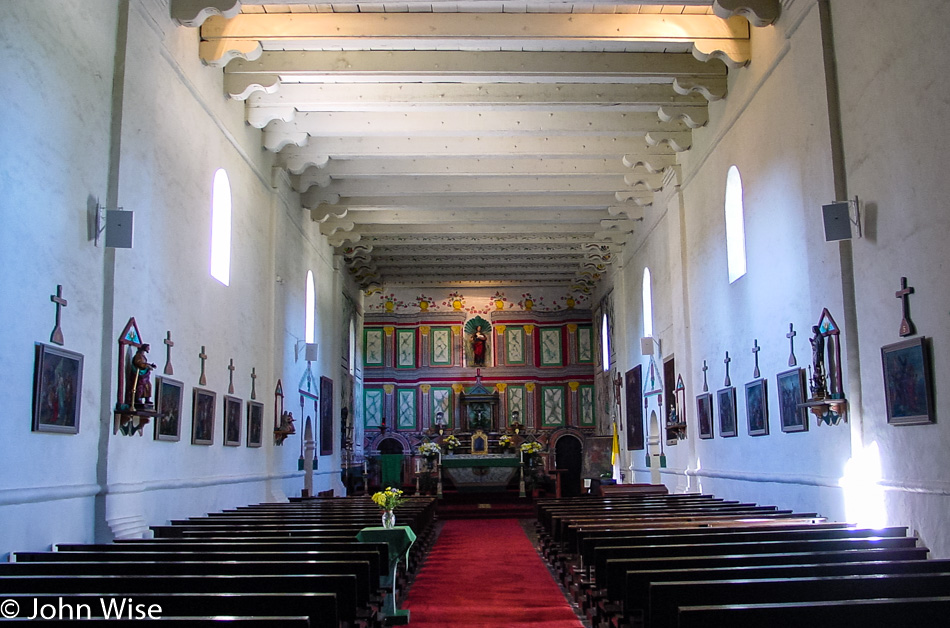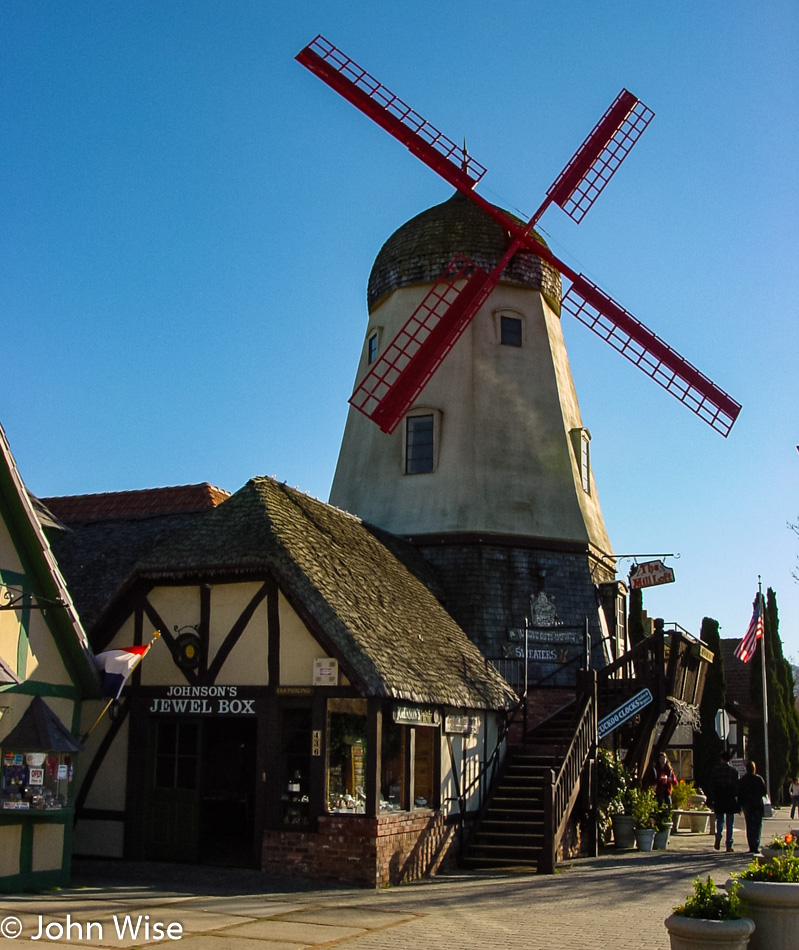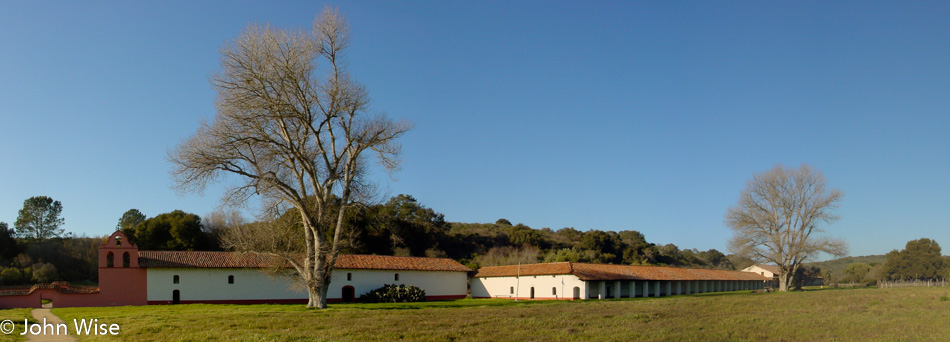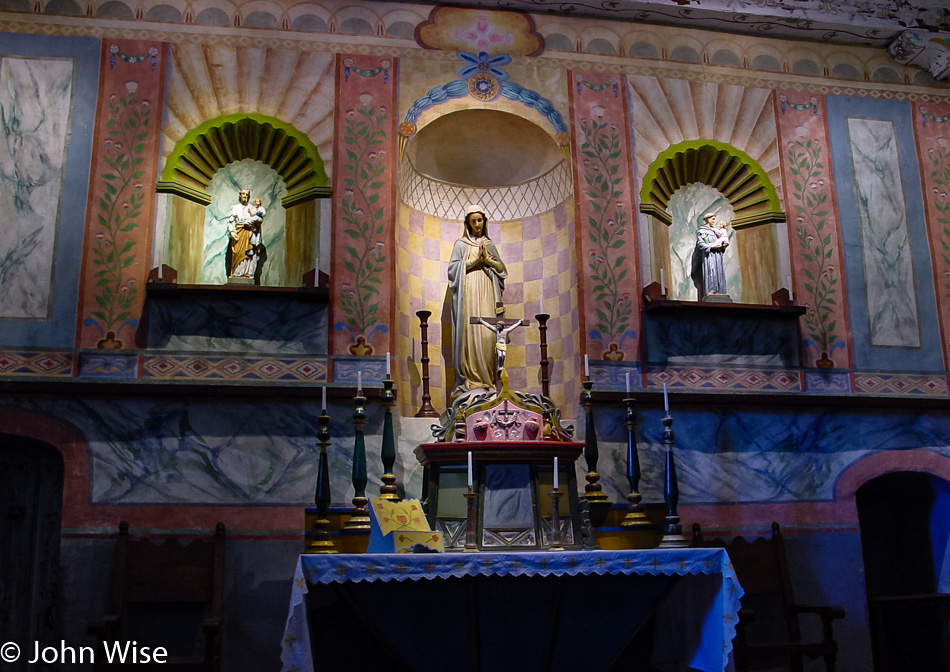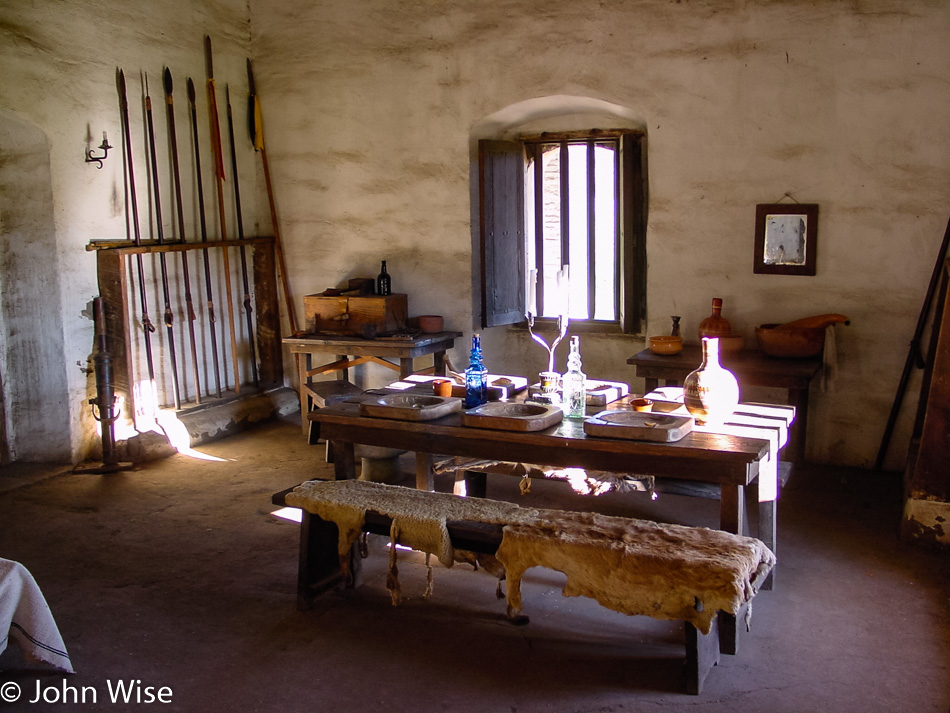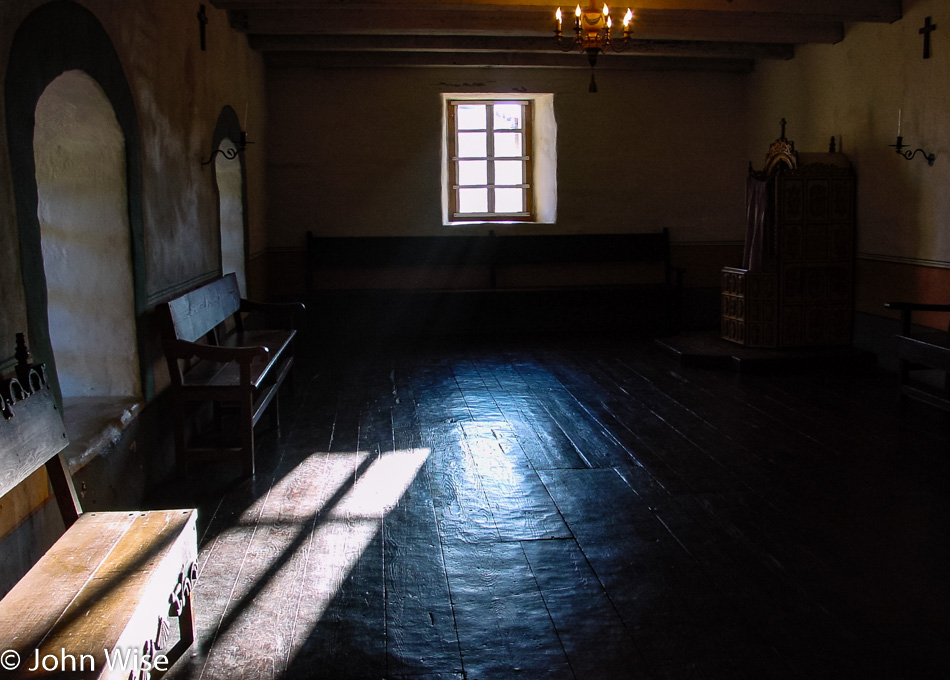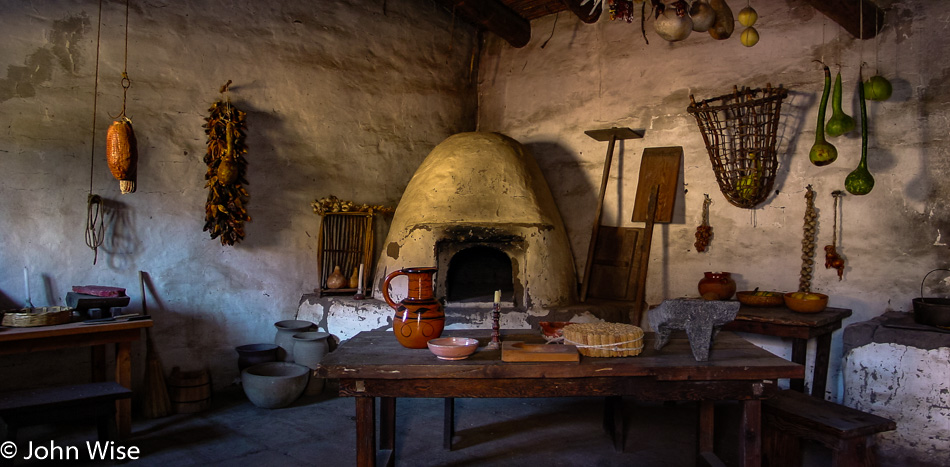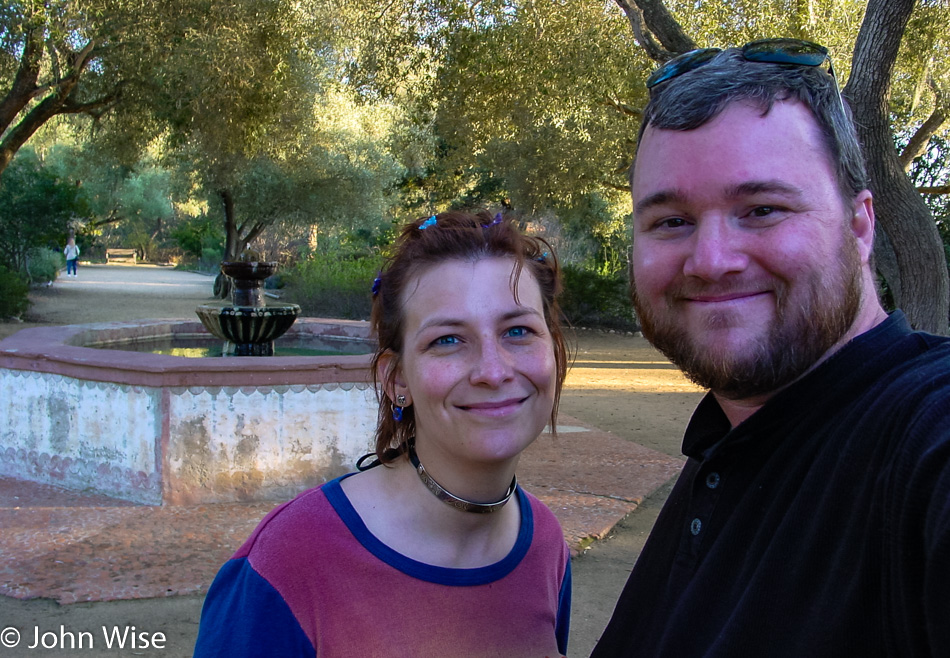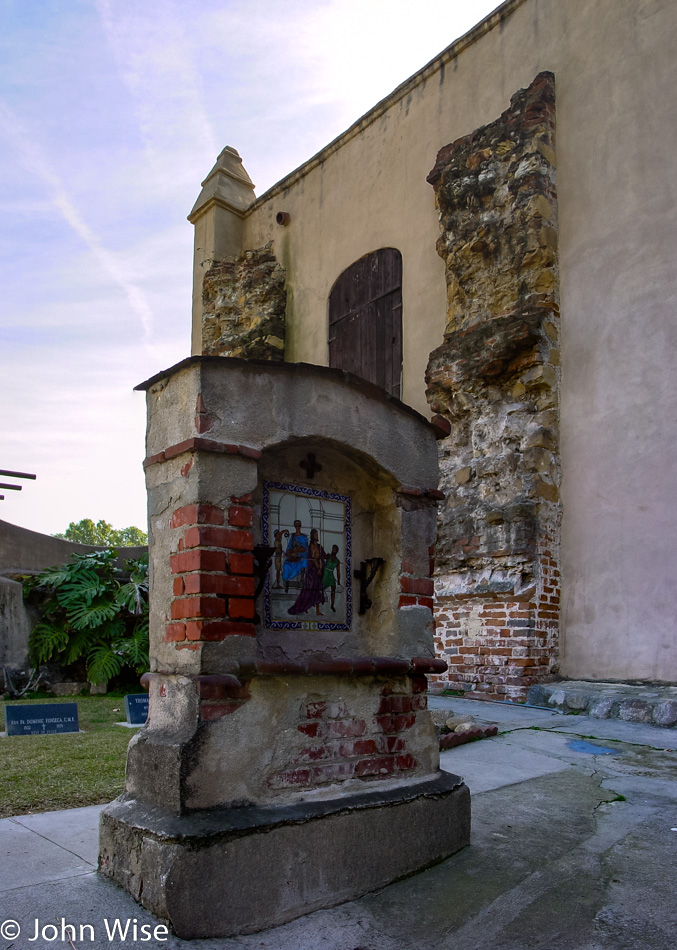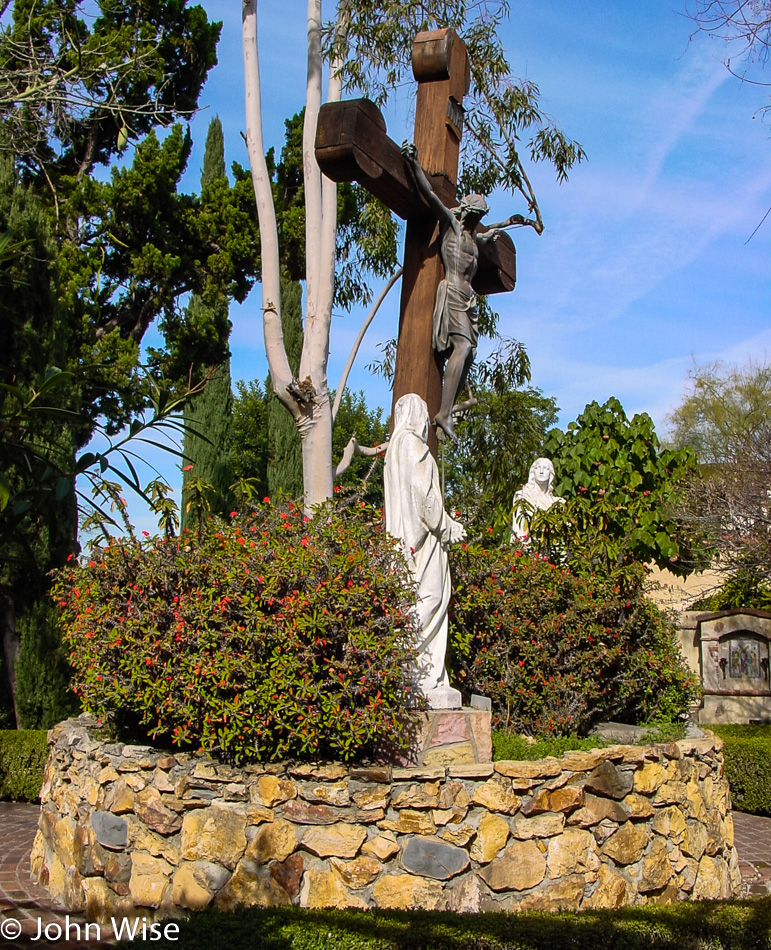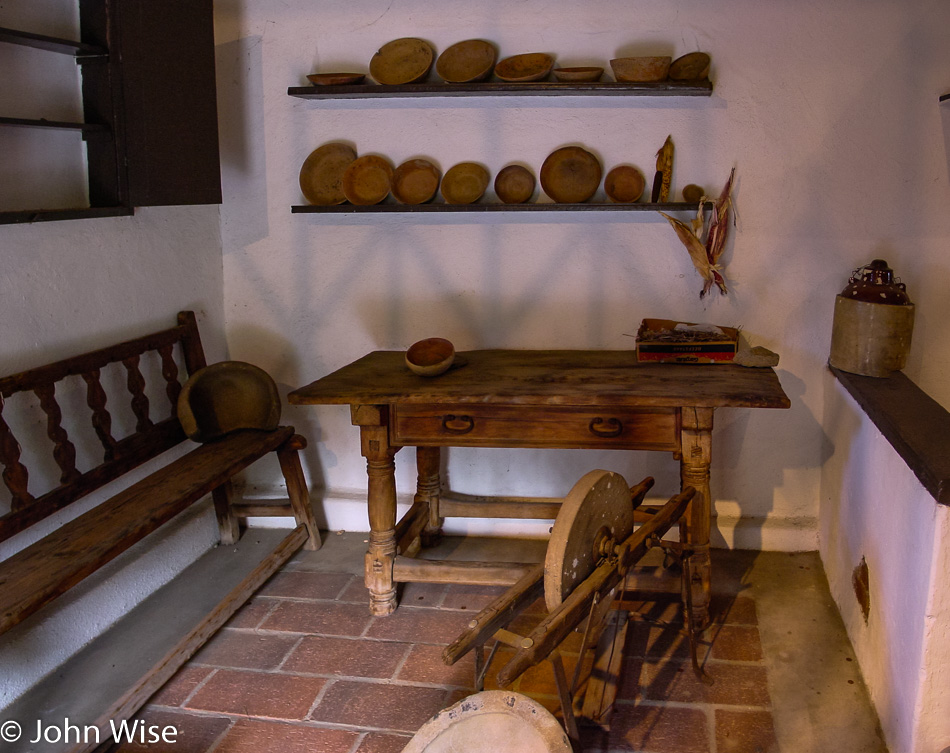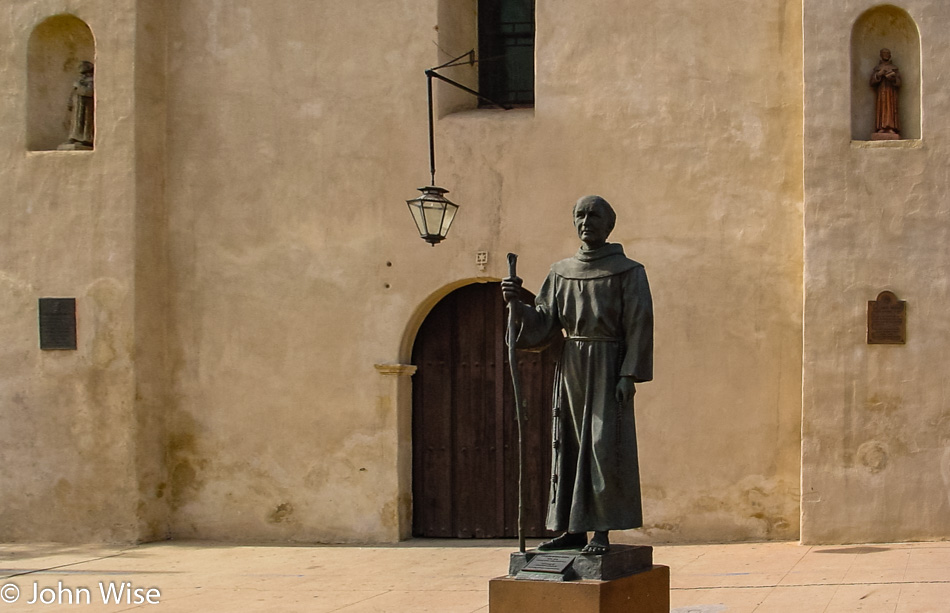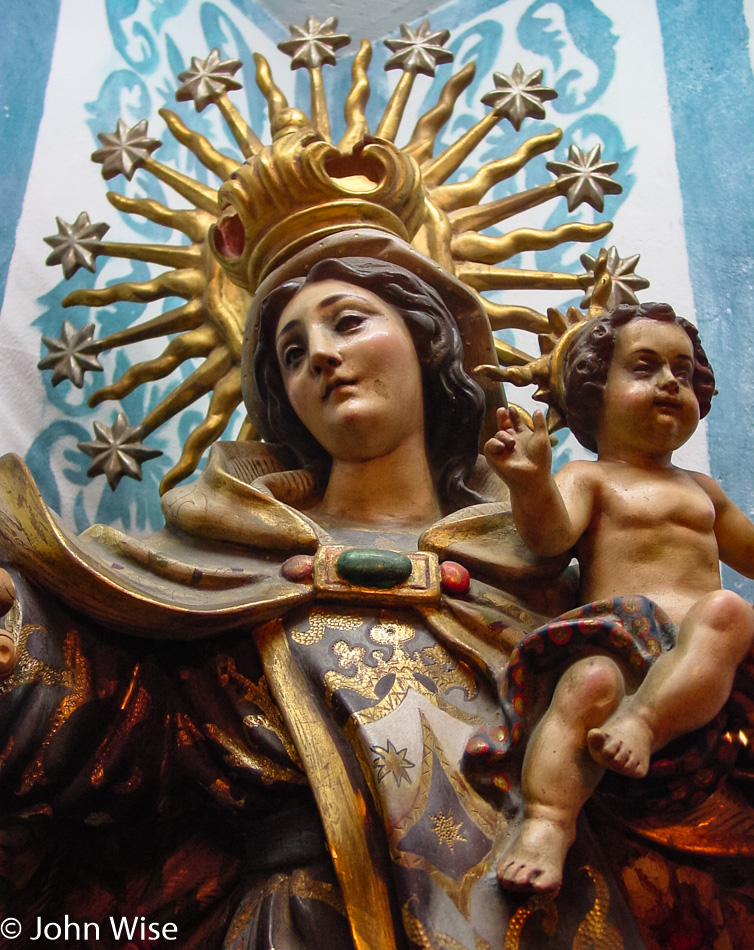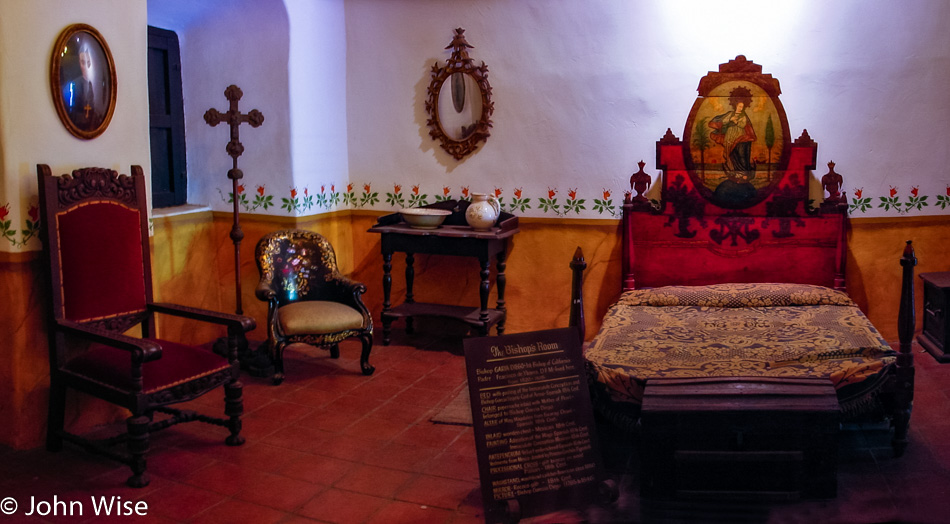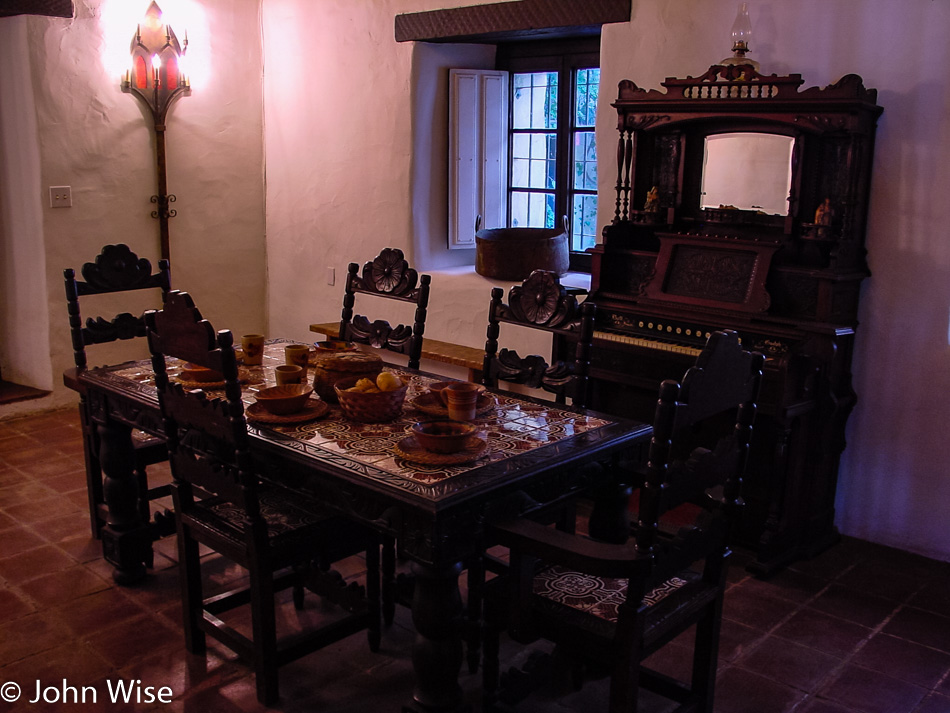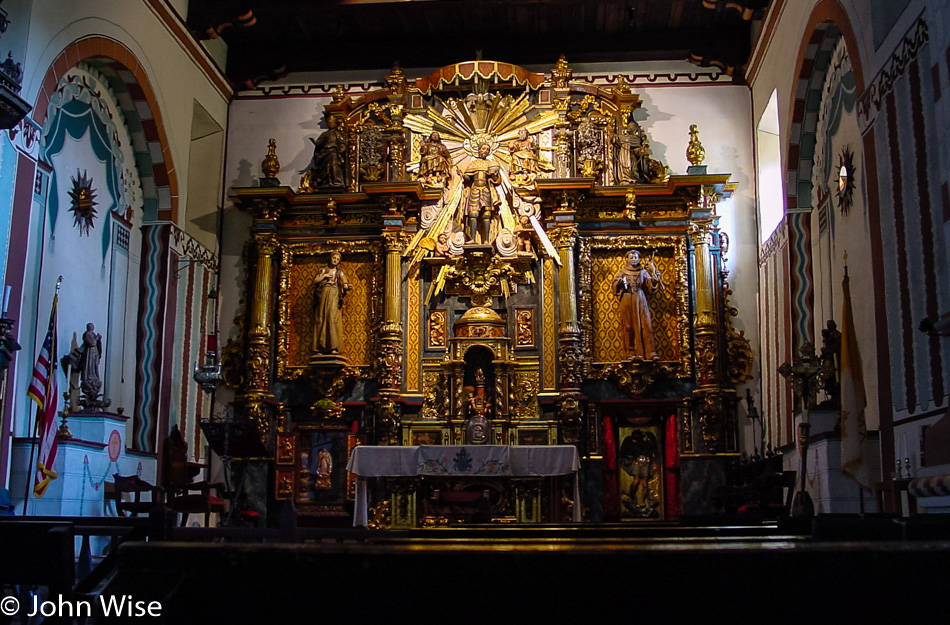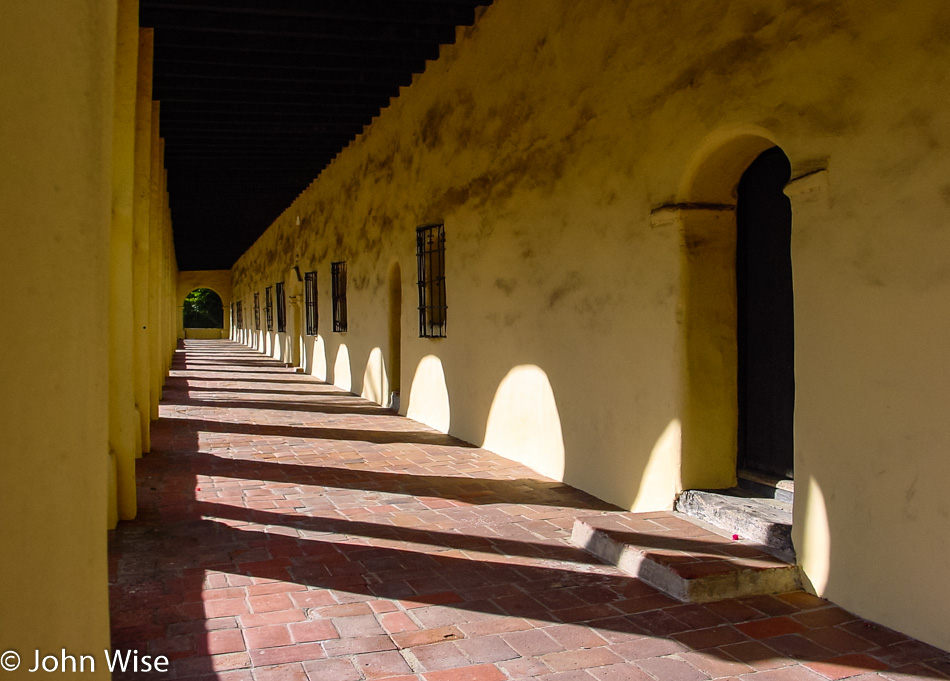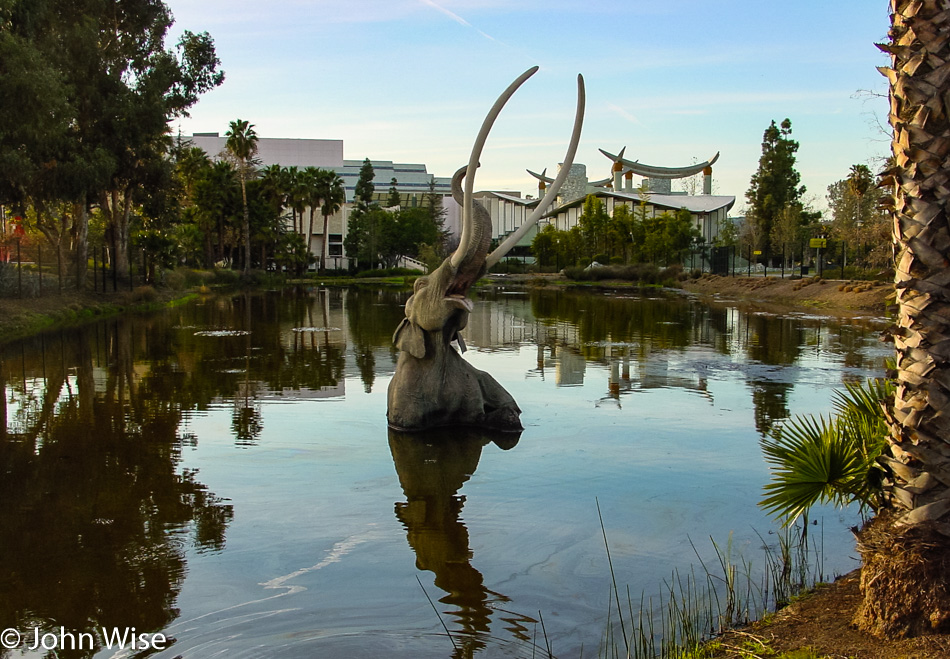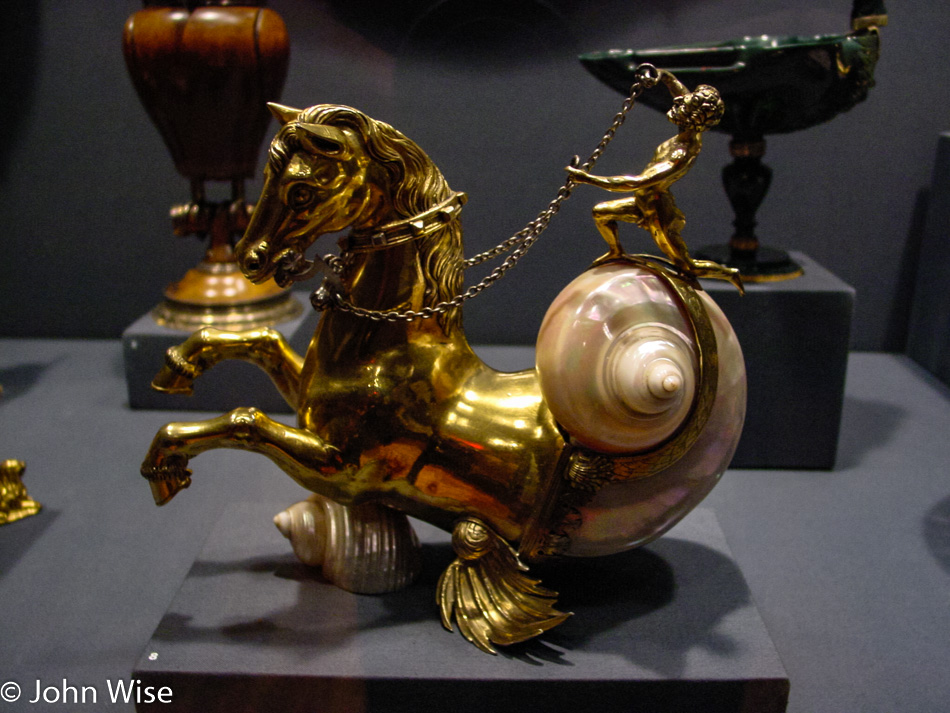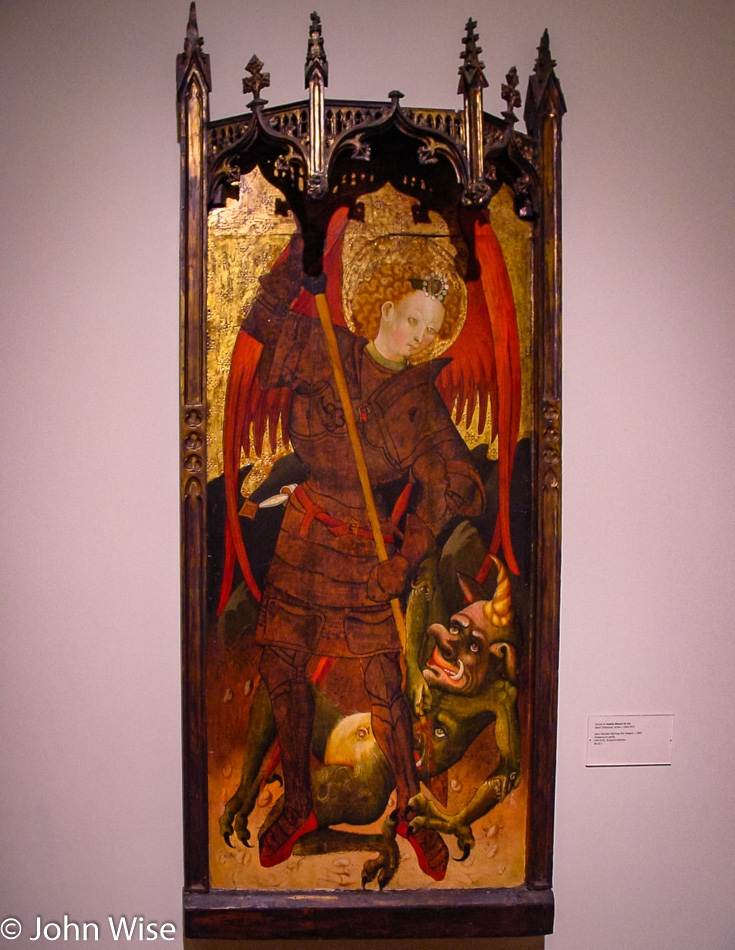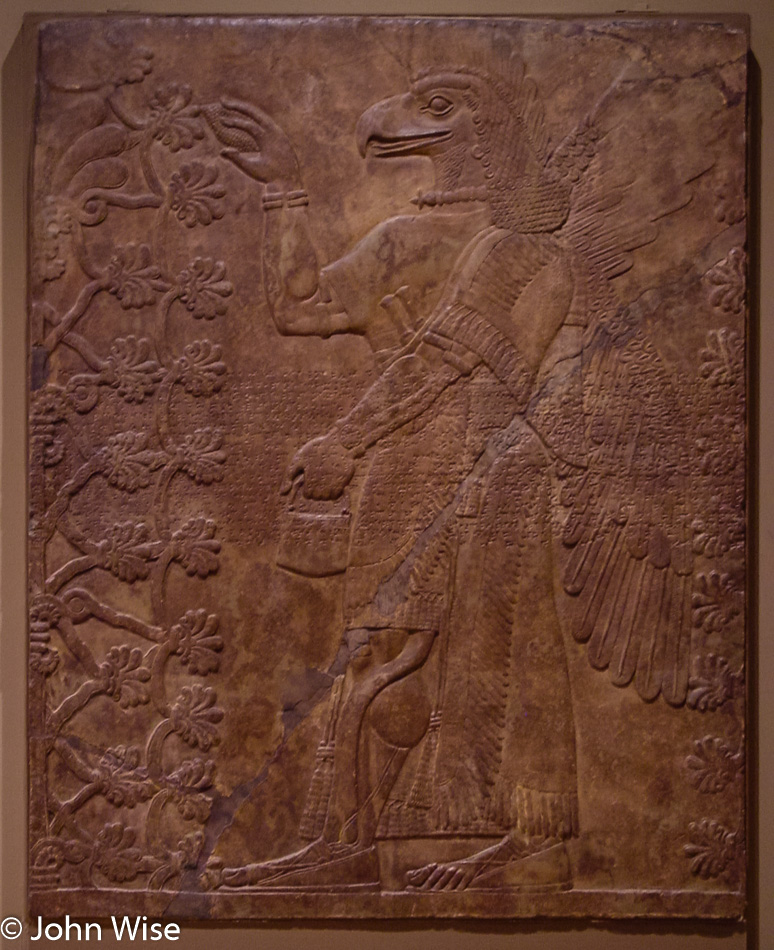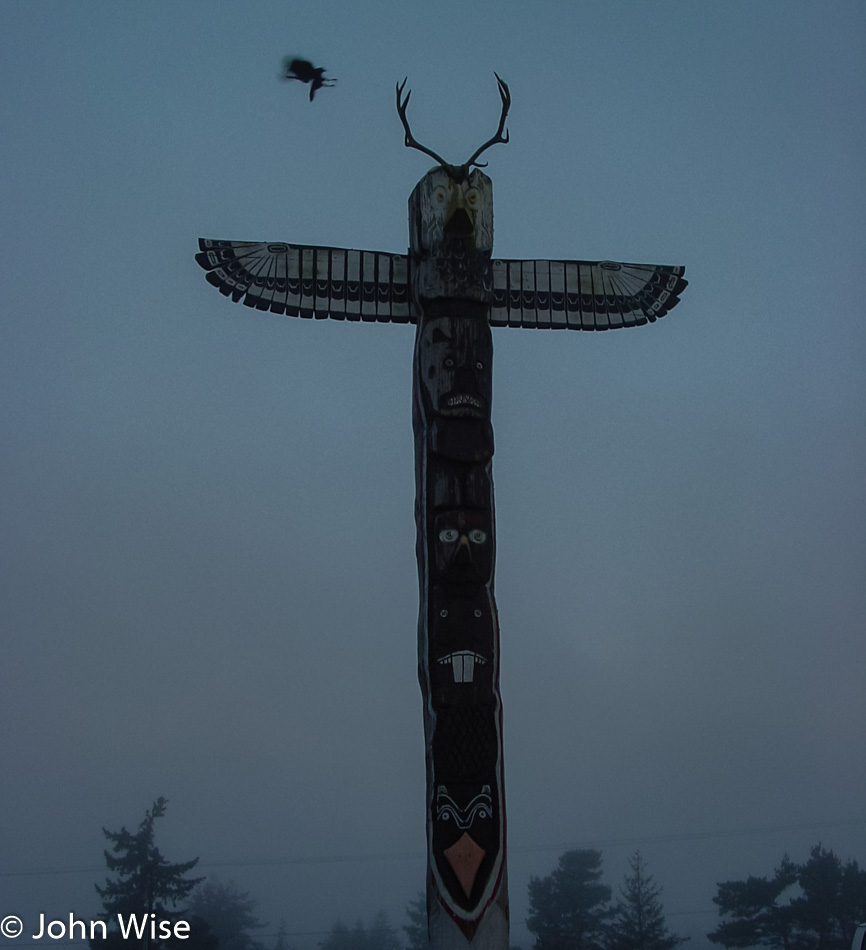
Just as we went to sleep in Florence, we woke there too, except now we are in a heavy fog. Across the street from our motel is the Benevolent and Protective Order of Elks lodge number 1858 and a very cool totem pole with a bird of prey emerging out of the middle of the sky to grab hold of an antler, allowing it to channel the energy of the totem as it prepares to enter the forest in its hunt for breakfast. We, on the other hand, just need to head for the drive-thru, if only we did that kind of crap. Okay, in an emergency, we would.
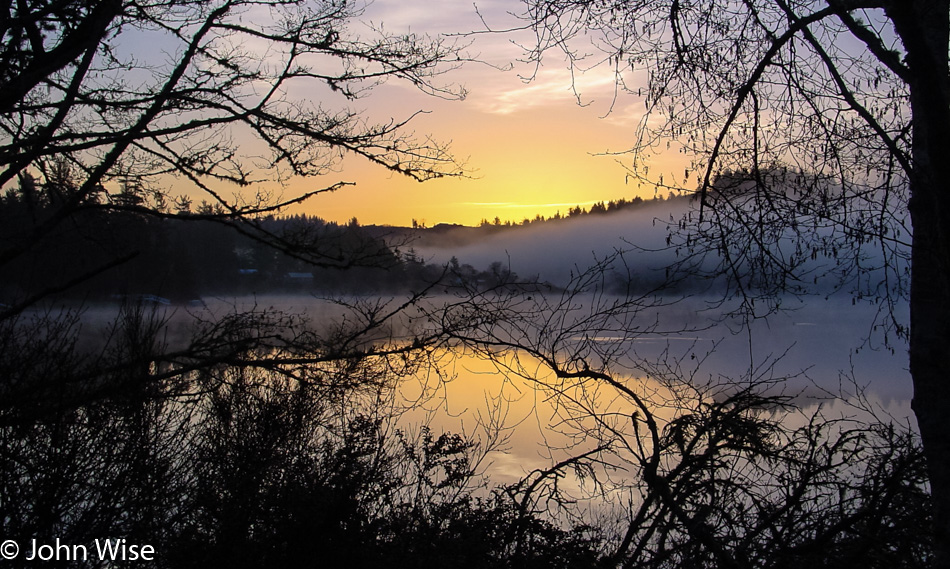
Just north of town, we stop to admire the dawn sky reflecting on Sutton Lake as the fog has been clearing. But hey, why are we going north when Arizona is to the south? Last night, on the way down, we saw a sign pointing our attention to the Sea Lion Caves right up here on the coast, a short drive from Florence, so we thought we’d go by in the morning.
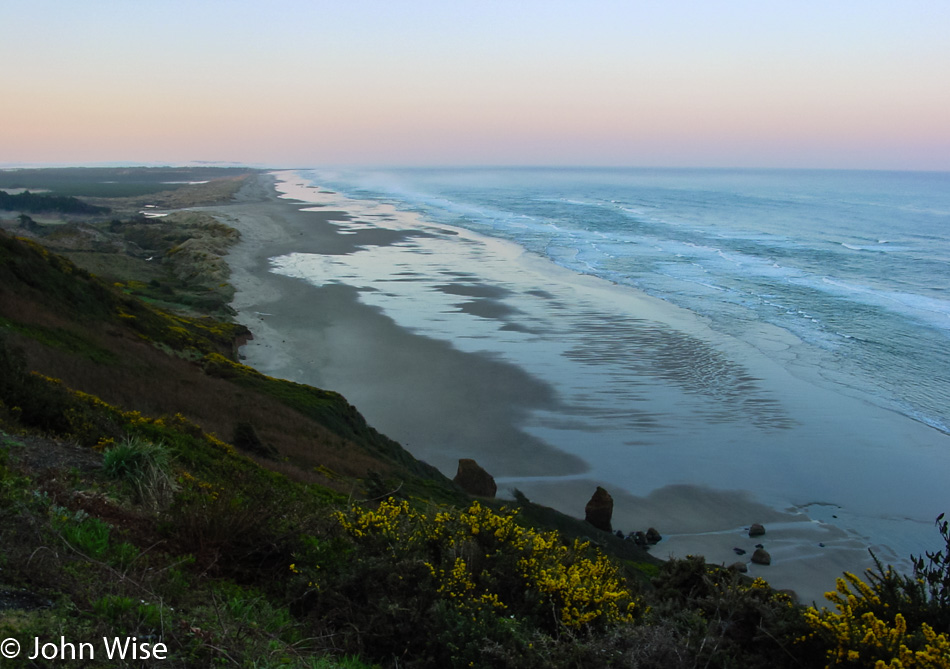
Looking south on our way to the Sea Lion Caves at what we missed last night while driving in the dark.
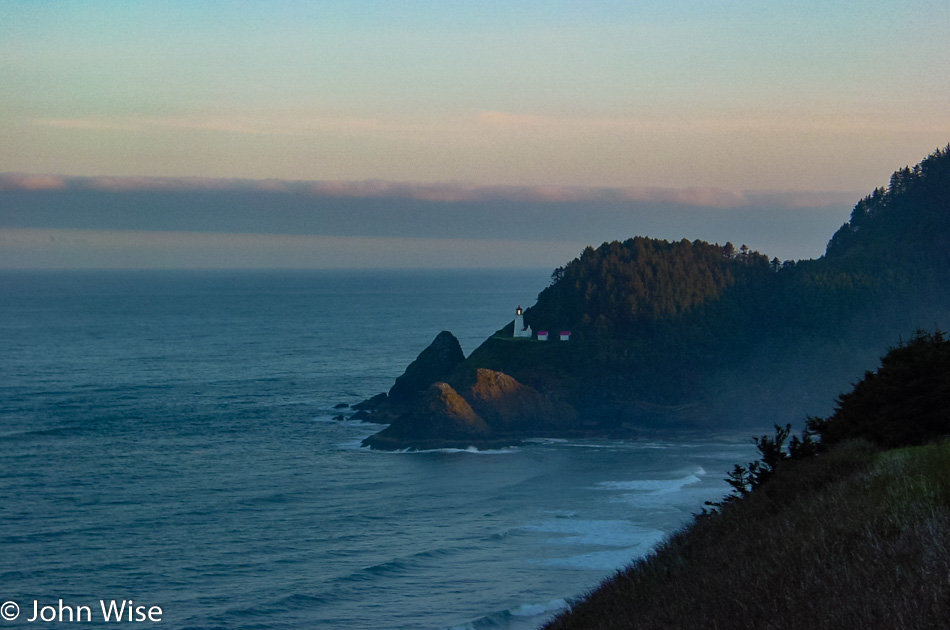
Well, it turns out that the caves are not open at 6:30 in the morning, and neither is the Heceta Head Lighthouse. This is all mighty inconvenient as we are here ready to visit, but no one is at work yet.
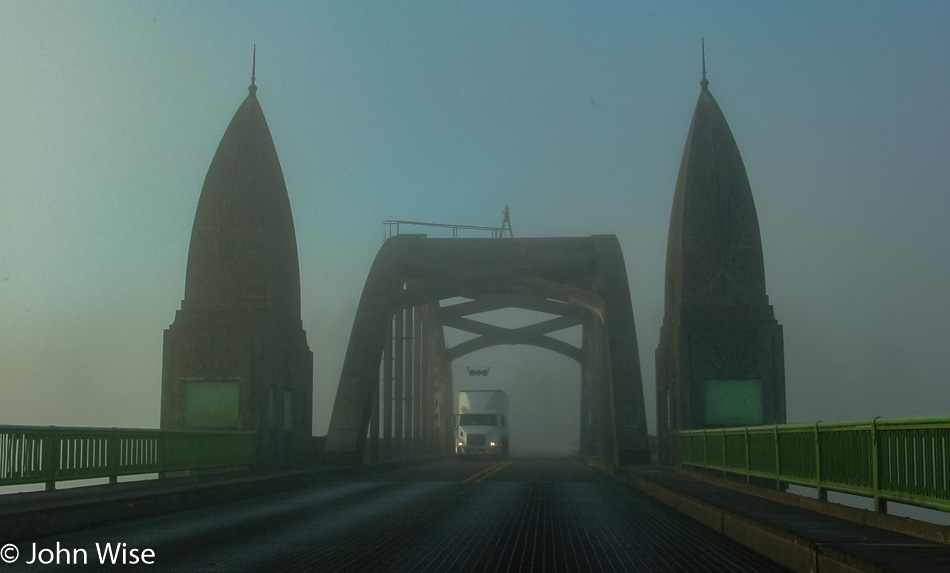
Back down in the Florence area and crossing the Siuslaw River Bridge. We have reentered the fog, but it will be short-lived.
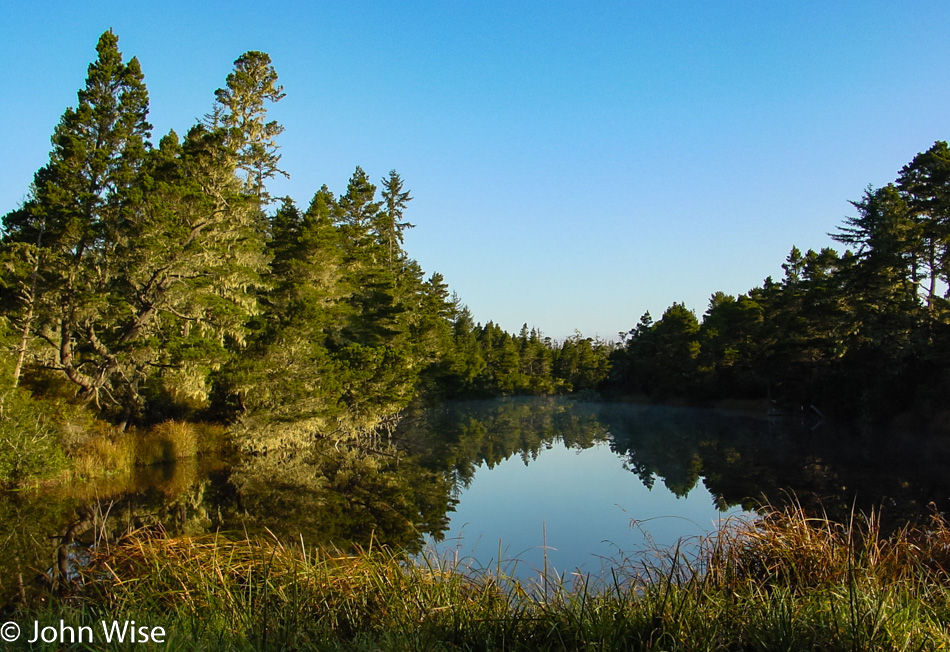
By the time we are passing Siltcoos Lake, the fog has once again dissipated, opening up the world to the warm colors of sunrise and calm waters undisturbed by so much as a fly’s wing.
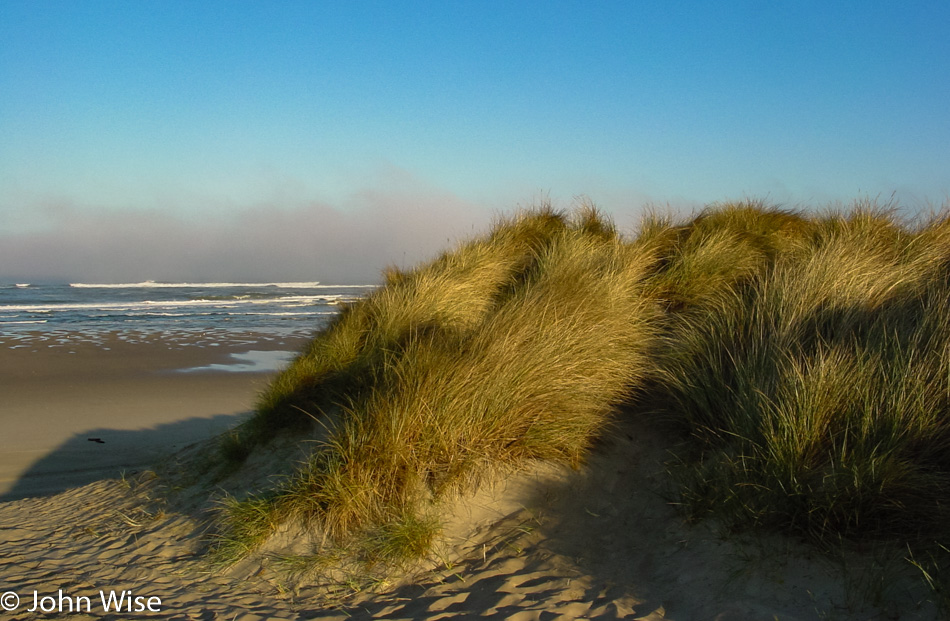
We spot a turnout with the promise of a beach walk that we can’t pass up. Coastal seagrasses kind of look furry and cozy while performing the duty of helping dunes stay together and not just blow away. While that’s probably important to the coastal ecology, it is simply a sight we don’t often get to see, and so whatever its role, for us right now, it is here as a beauty enhancement for purely cosmetic reasons that are forcing us to love this coast of Oregon all the more.
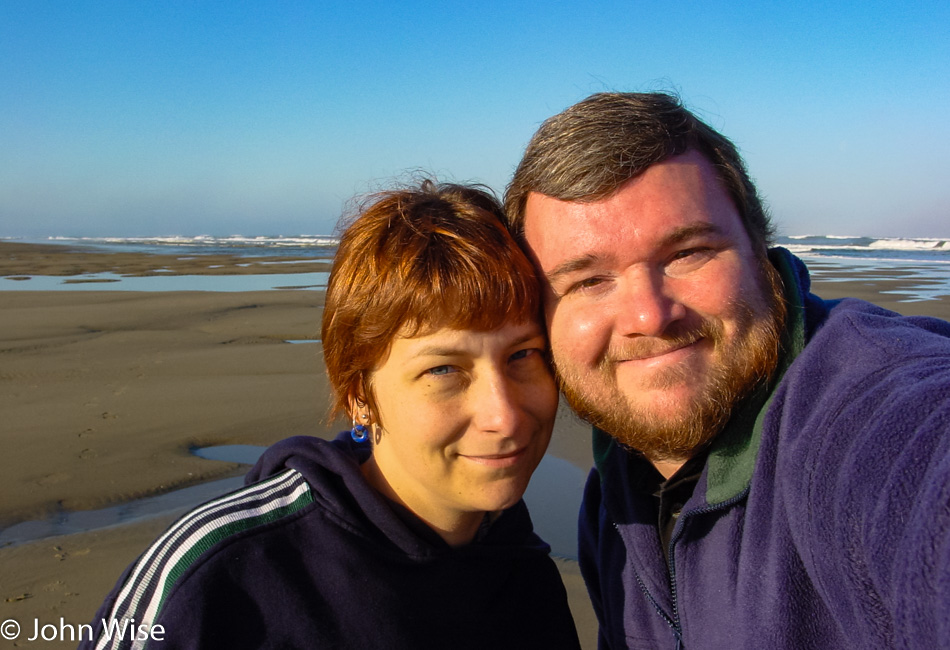
Empty cold beaches that stretch for miles with the sound of pounding surf, shorebirds, the blowing wind, and the two of us walking along, astonished that we should be the only ones out there.
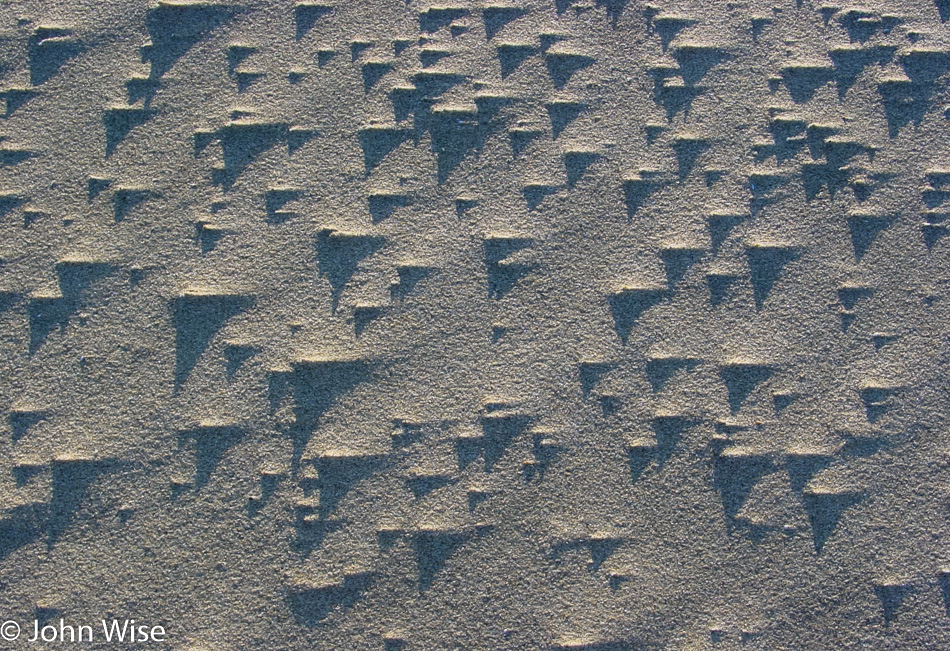
The mystery of how these Morse code dots and lines are made in the sand should remain outside of our knowledge, so they may always inspire us to wonder just how and why they look as intriguing as they do.
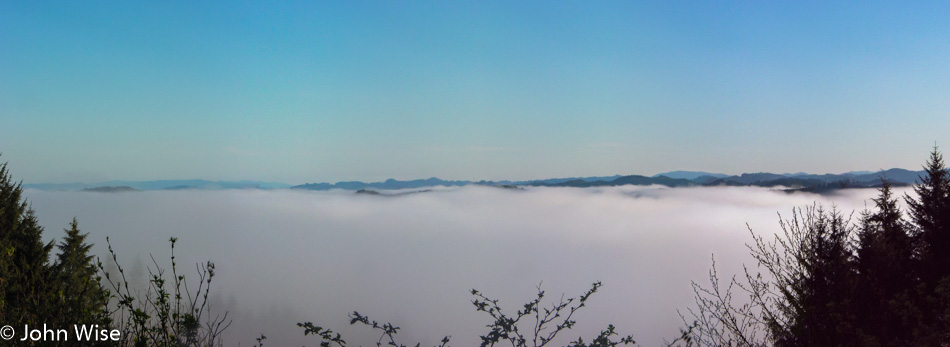
Fog is lingering over Tahkenitch Lake, and our road is just high enough to give us this birds-eye view of the top of fog, in case you too, wondered what it looked like from above.
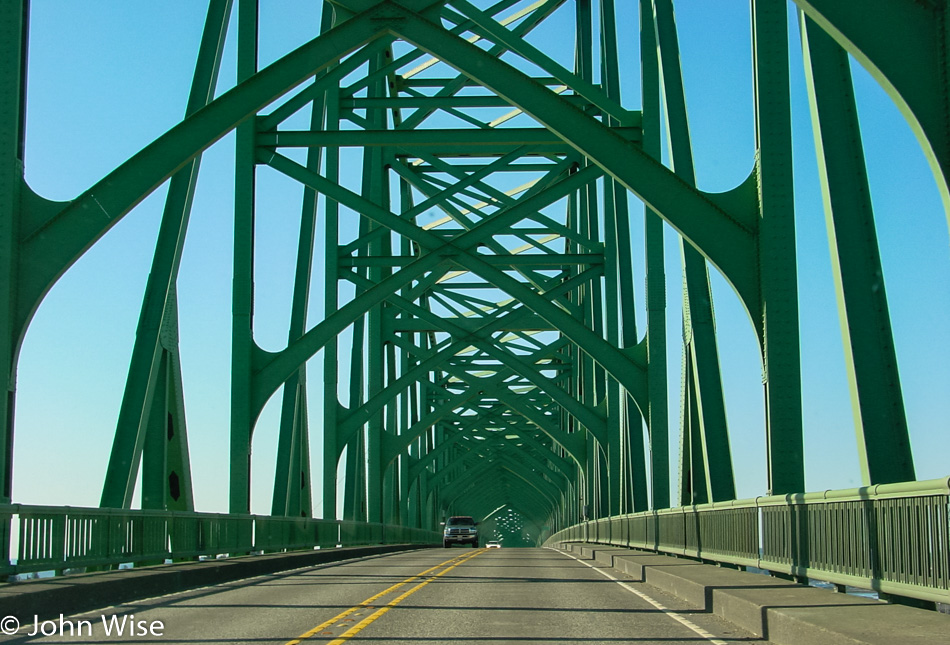
These bridges are beautiful and we are enchanted that every one is different than the last one we crossed. Here we are passing into North Bend.
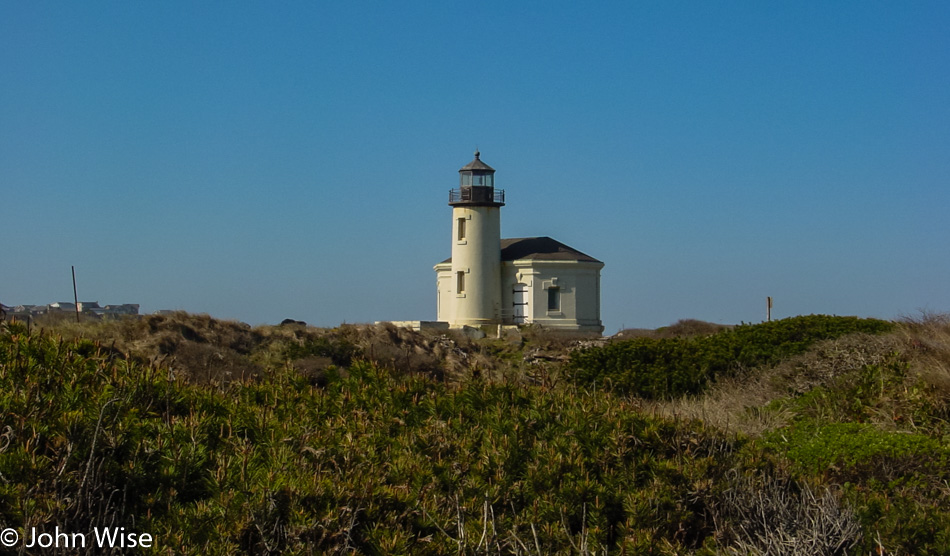
The Coquille River Light stands as a sentinel at the mouth of the river where it meets the ocean. It’s not very tall, and the Fresnel lens is long gone. Visitation is only available from May through September, so it goes. This light is at Bullards State Park, which also has yurts for rent, which sounds interesting.
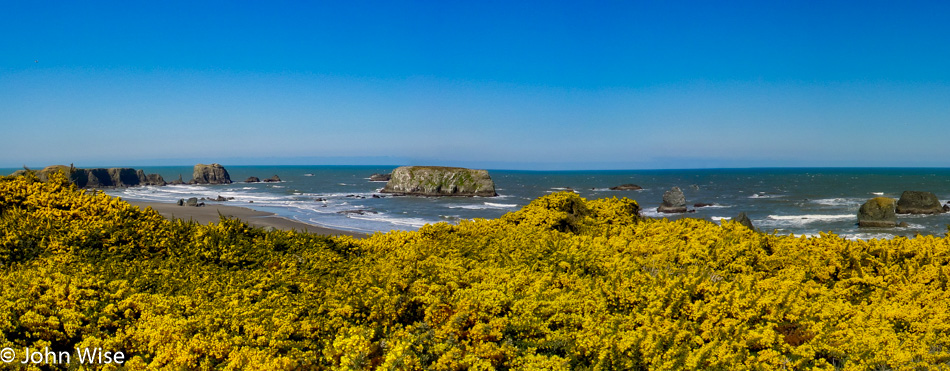
The yellow flowers seemed very familiar to Caroline, but she couldn’t put her finger on just why. It turns out this is gorse, and she had indeed seen it many years ago on a visit to Scotland. Gorse is native to Western Europe and not the Oregon Coast, but the founder of Bandon, who was originally from Ireland, thought the plant would remind him of home. Then, in 1936, some sixty years after the town was put on the map, a fire spread quickly and destroyed about 485 of Bandon’s 500 buildings. Turns out that gorse has a high oil content that loves to burn explosively. Needless to say, gorse was not a favorite shrub after that; however, it was too late, and the plant was here to stay. Over the years, gorse has proved to be extremely invasive and hard to eradicate.
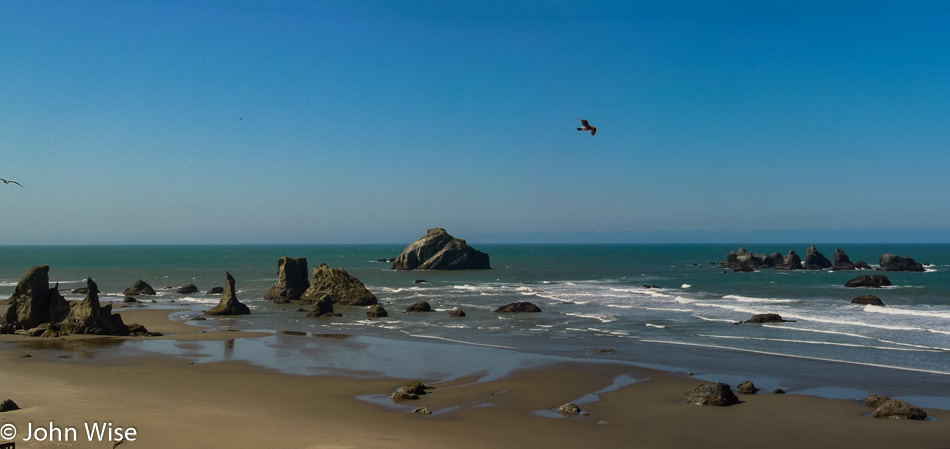
The aptly named Face Rock is just left of center, also here in Bandon.
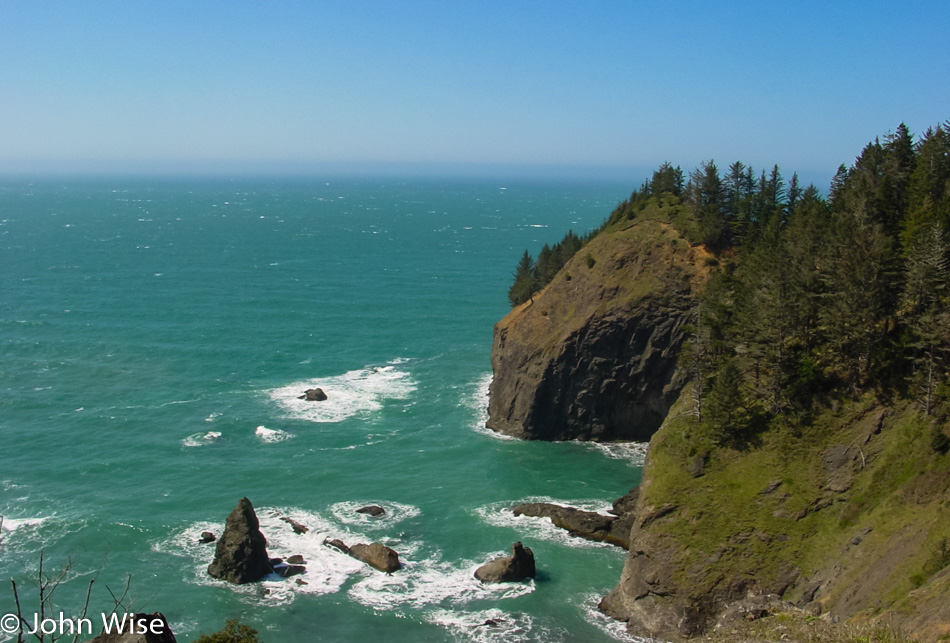
Viewpoint at Spruce Creek in the Samuel H. Boardman State Scenic Corridor, Oregon. We have now driven 2,230 miles on this road trip, or 3,612 km, which is about the same as driving from Dublin, Ireland, east to Moscow, Russia, or from Stockholm, Sweden, south to Athens, Greece.
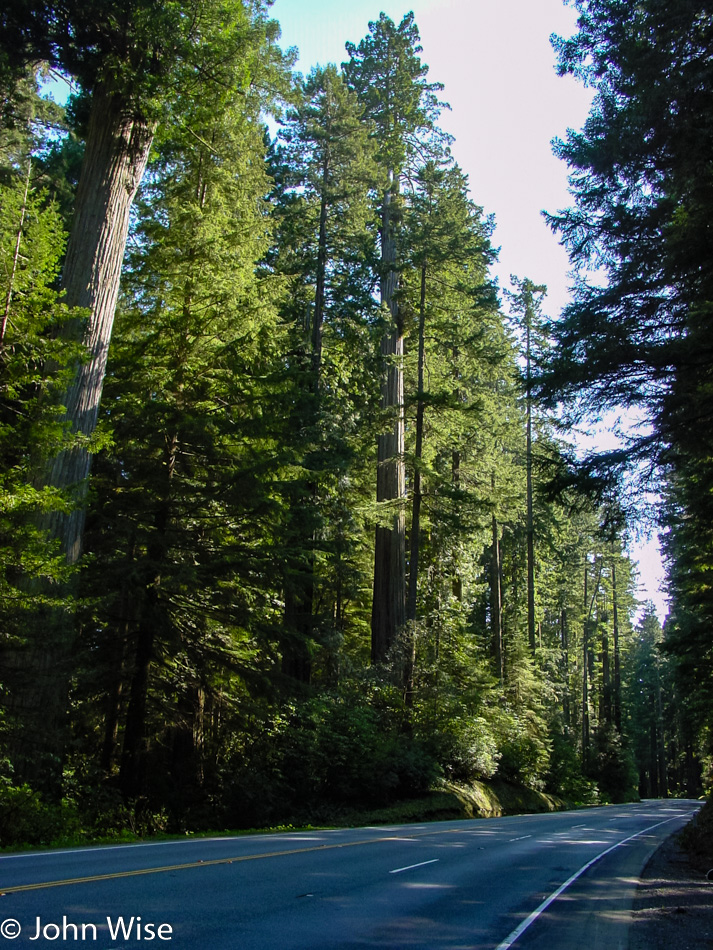
We crossed back into California and drove until we reached the Redwoods.
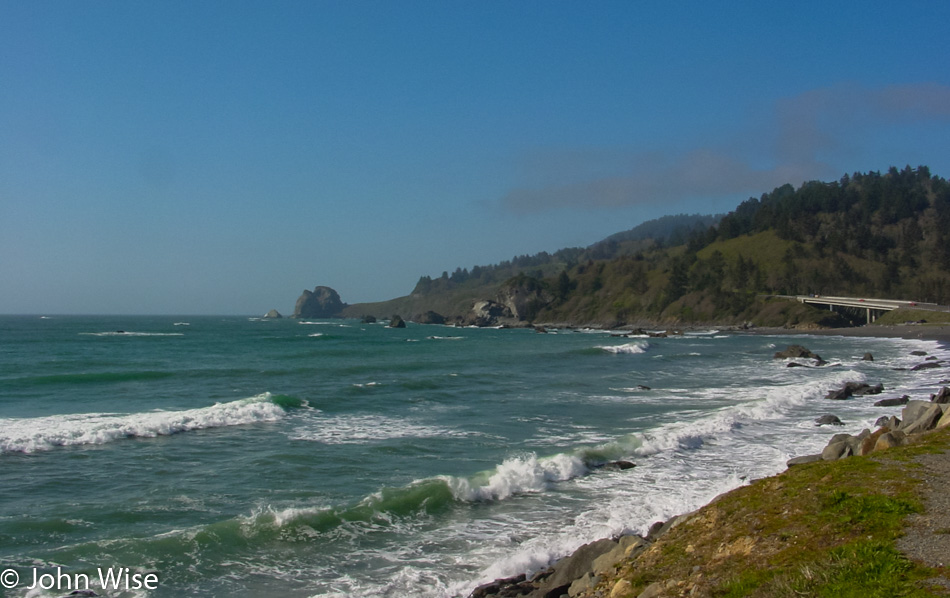
One of our last chances to see the ocean on this trip as Highway 101 weaves back and forth inland so we take the opportunity to stretch our legs and take a deep breath of that beautiful ocean air.
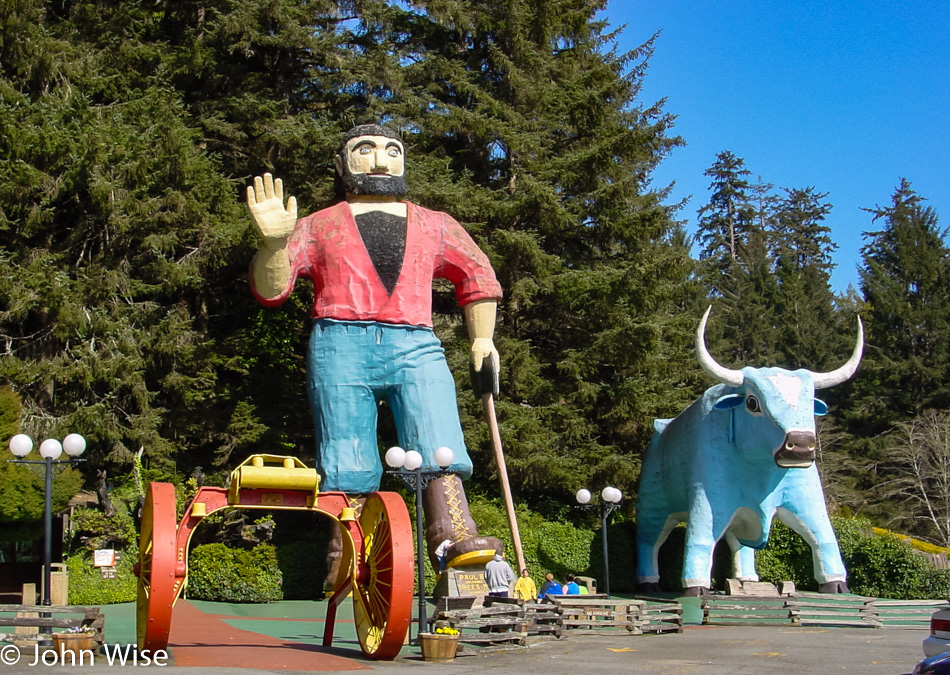
Well, this is interesting and annoying all at the same time: welcome to the Trees Of Mystery. It’s interesting because there’s a gondola ride up through the treetops of the Redwoods and annoying because immediately we start intoning “Treeeeeeees of Mmmmmmisterrrreeeeeee” and will do so the rest of the trip. We don’t have time to visit this time, but we will certainly make an effort to return someday.
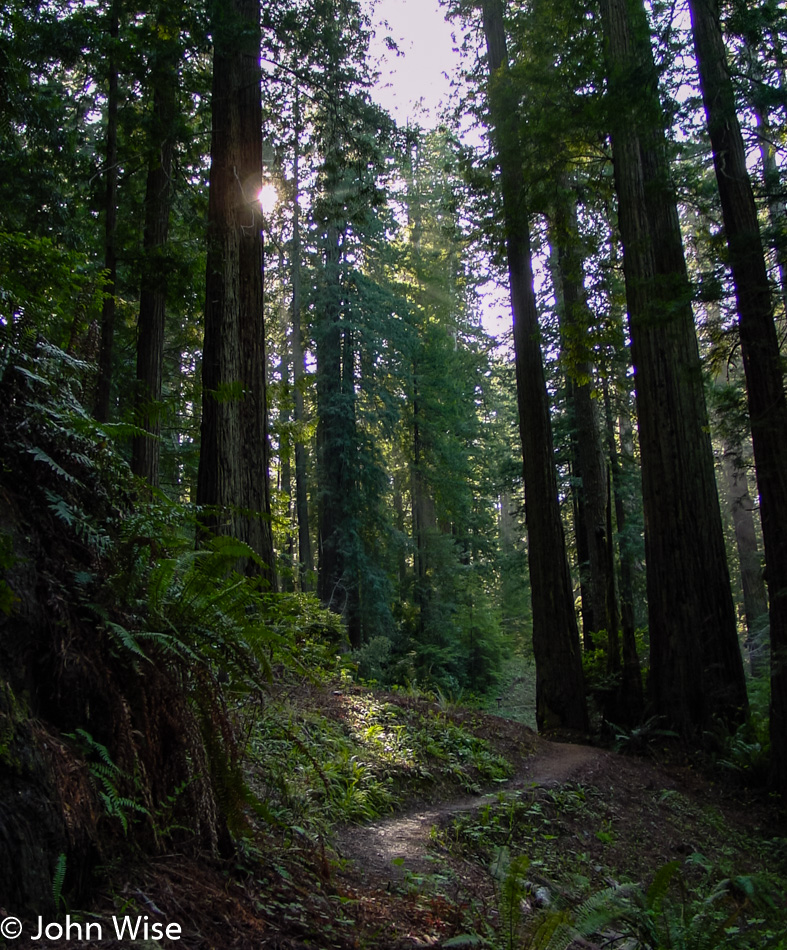
We couldn’t just stay in the car and drive through; we needed to get out and get a feel for the ancient forest. We randomly found the Ah-Pah Interpretive Trail, which gives travelers a great and easy view into the woods. Interestingly, there used to be a road here and signs are explaining the efforts employed to remove it and restore the original vegetation.
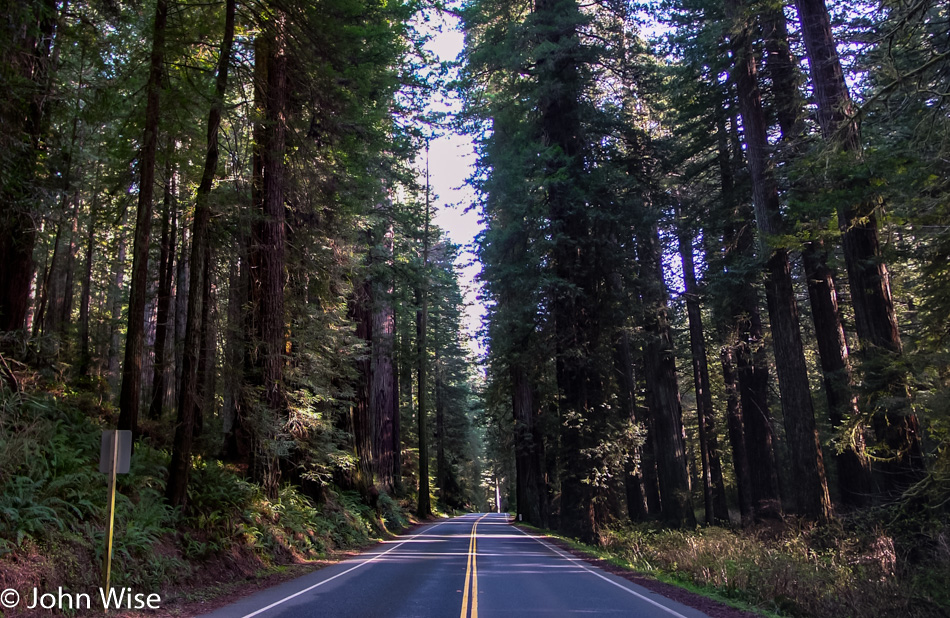
There should be a traffic jam of people gawking at the spectacle of these giant old trees just growing right next to the road. Instead, everyone else is over on the 101 while we cruise along like snails on a side road.
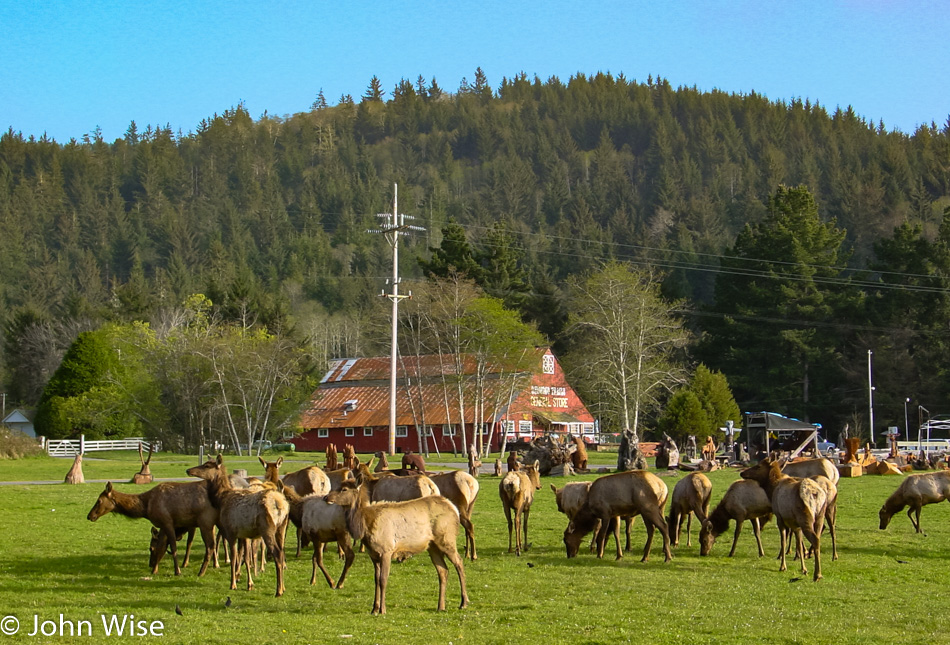
How many times do signs tell us about wildlife ahead and to slow down? We know better that there are no elk, donkeys, deer, or javelinas that we’re going to see, and then BAM, here is the Roosevelt elk herd. An entire murder of elk was just standing around munching grass. They weren’t fenced in; they were just wandering around looking for some good green grub.
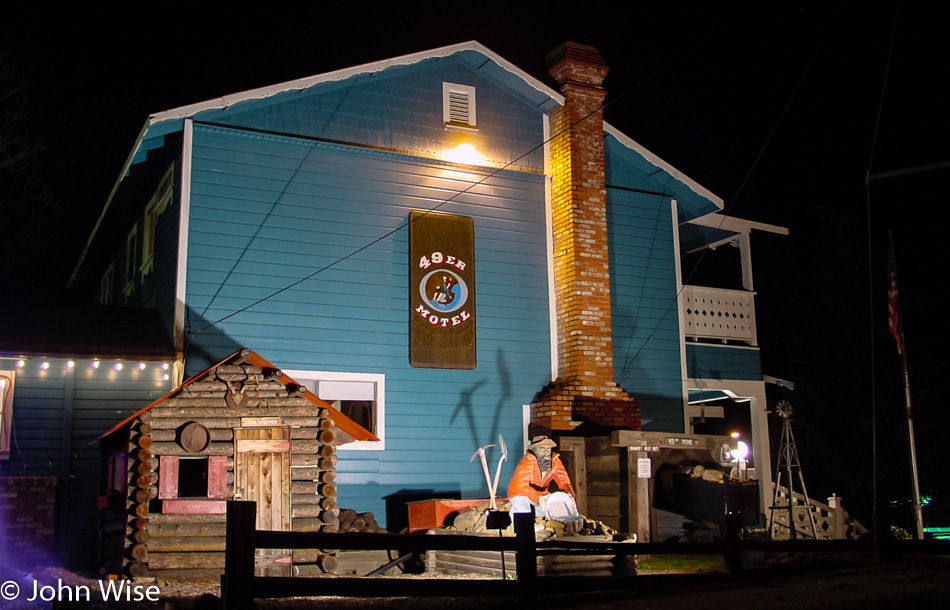
On road 299 to Interstate 5 in Weaverville, California, we pass this cool-looking 49er Gold Country Inn and wish this were where we would be staying, but we need to get as far south as possible tonight so we can be back in Phoenix by the end of the day tomorrow. It was only 7:30 p.m. as we drove through, and it would be 10:00 p.m. when I was too exhausted to go on, and we checked into an Economy Inn in Willows, California.
